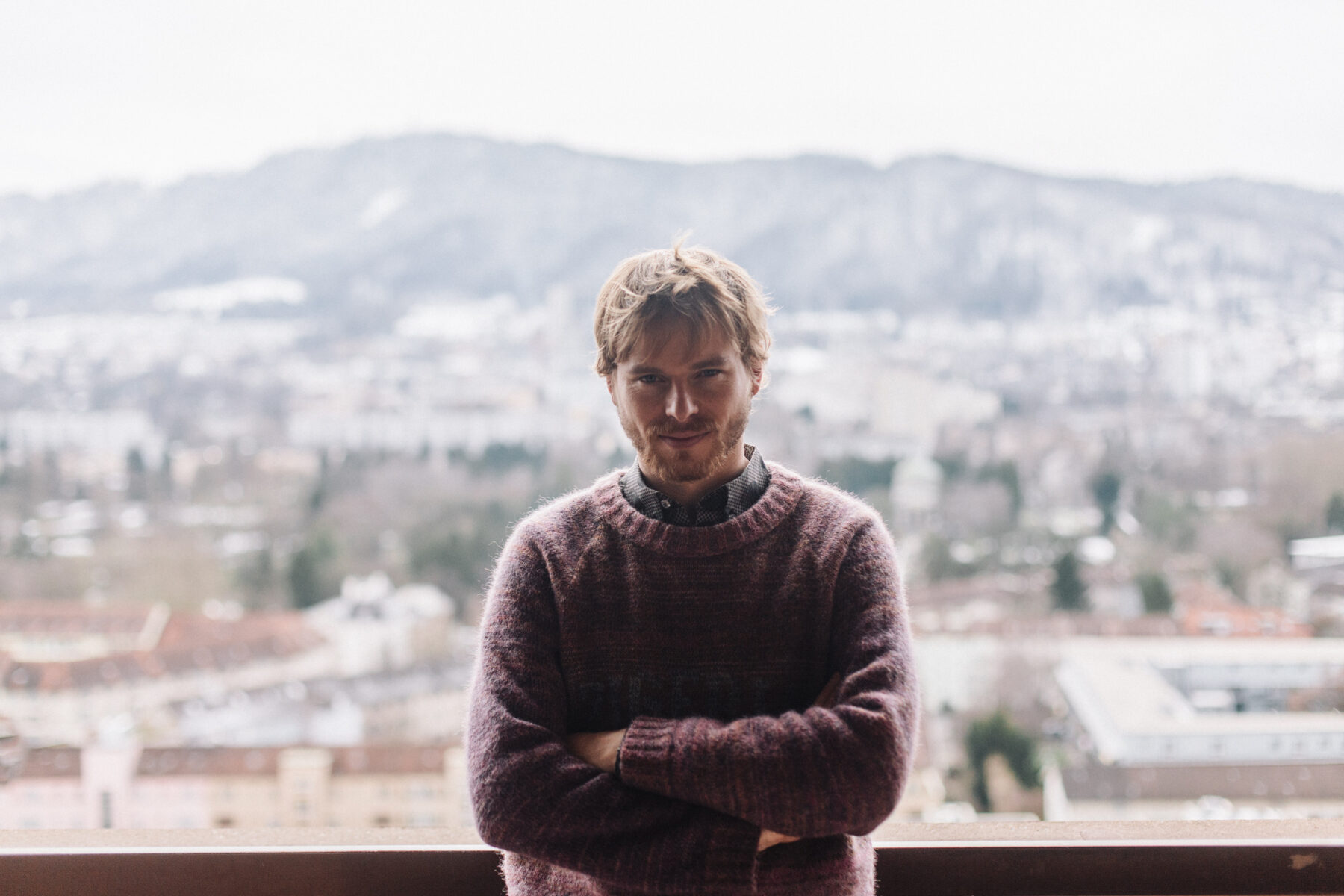He finds inspiration at Disneyland. He has no fears. He puts men in hot pink dress pants.
In short, fashion designer Julian Zigerli only does what he wants, including pop-up pandas on his website, smileys on the company postcards and a heart included in the logo. Not that he doesn’t take his career in the fashion industry seriously. It’s just always been that this blond boy from Zurich’s agglomeration, son of a military pilot, has always been different.
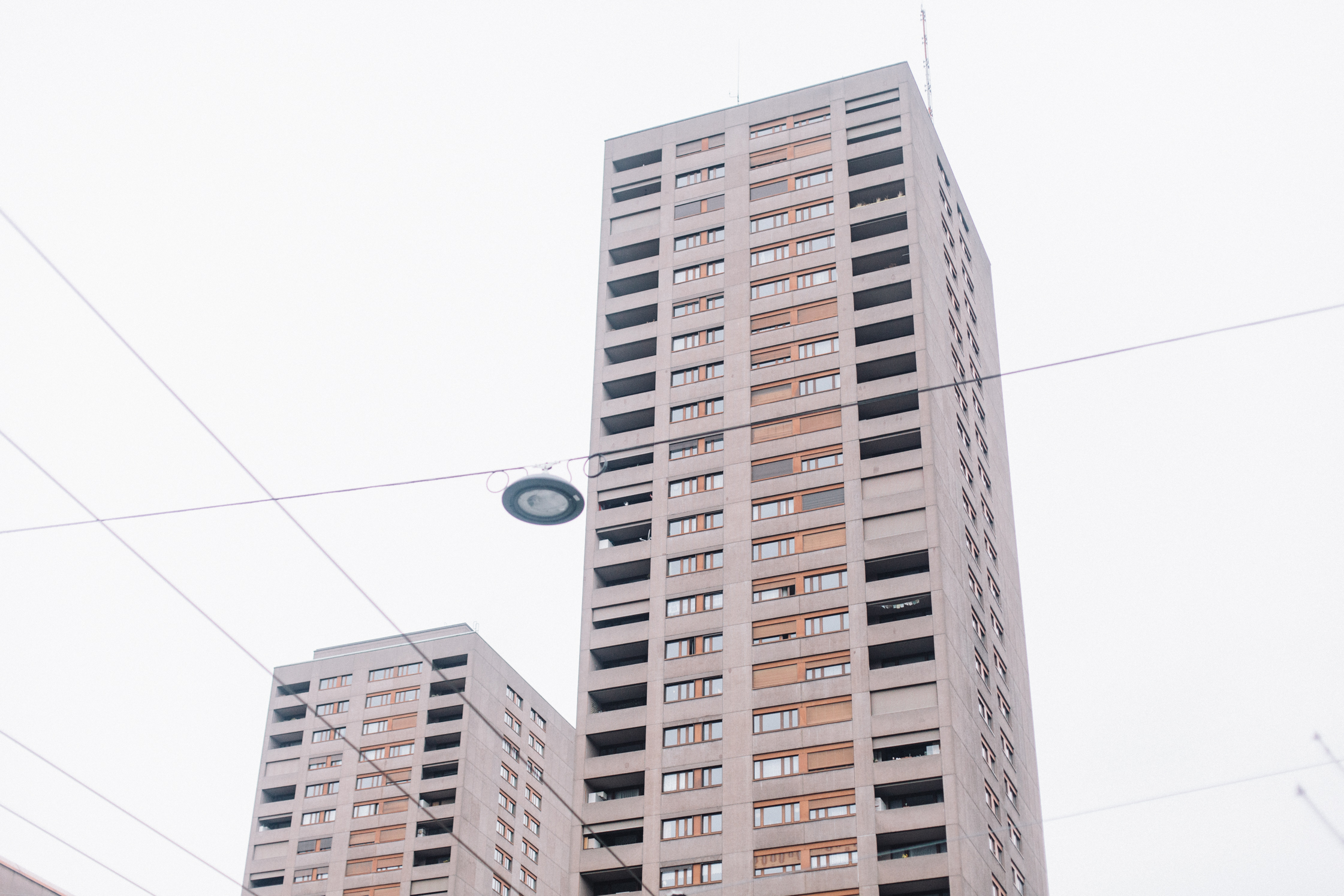
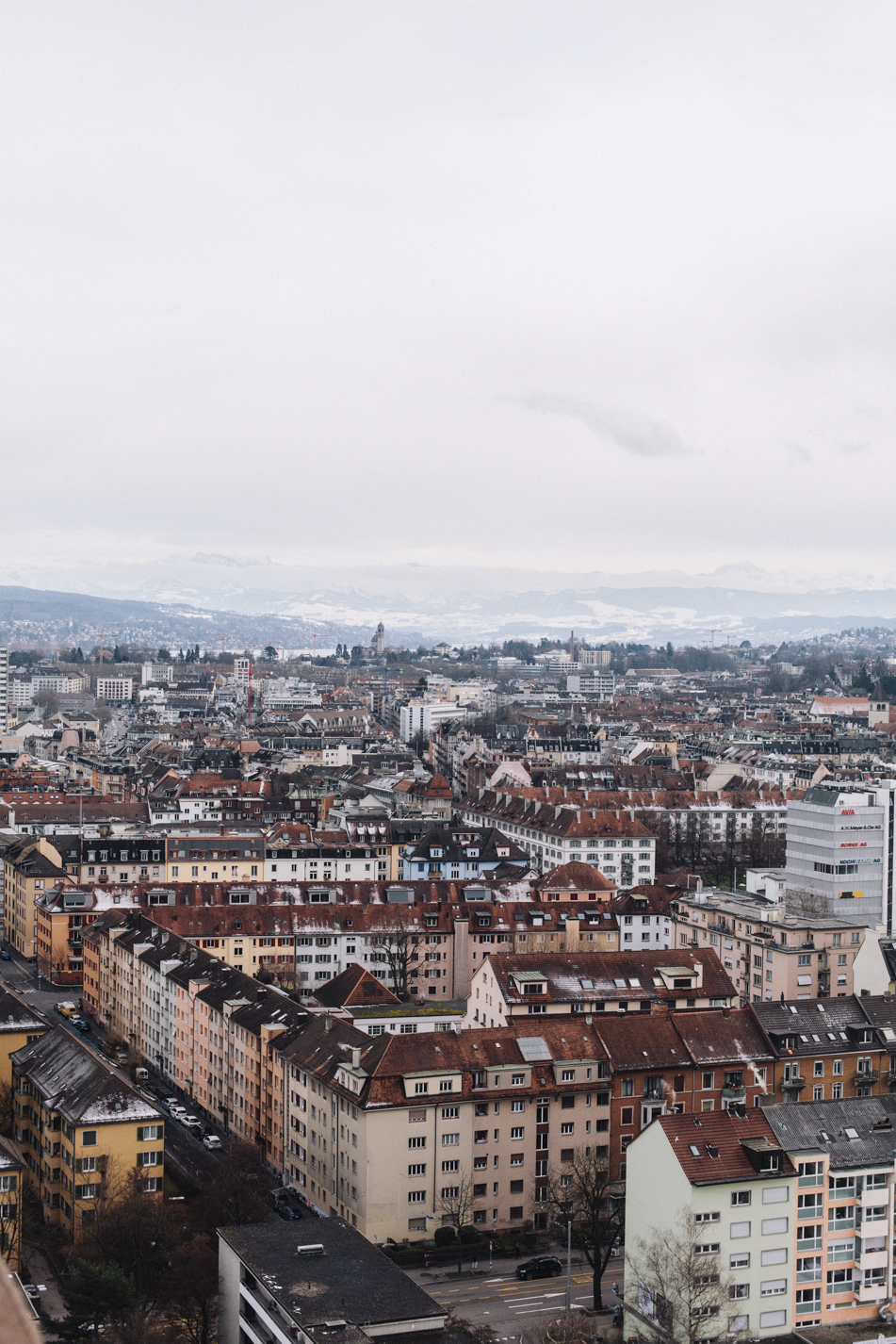
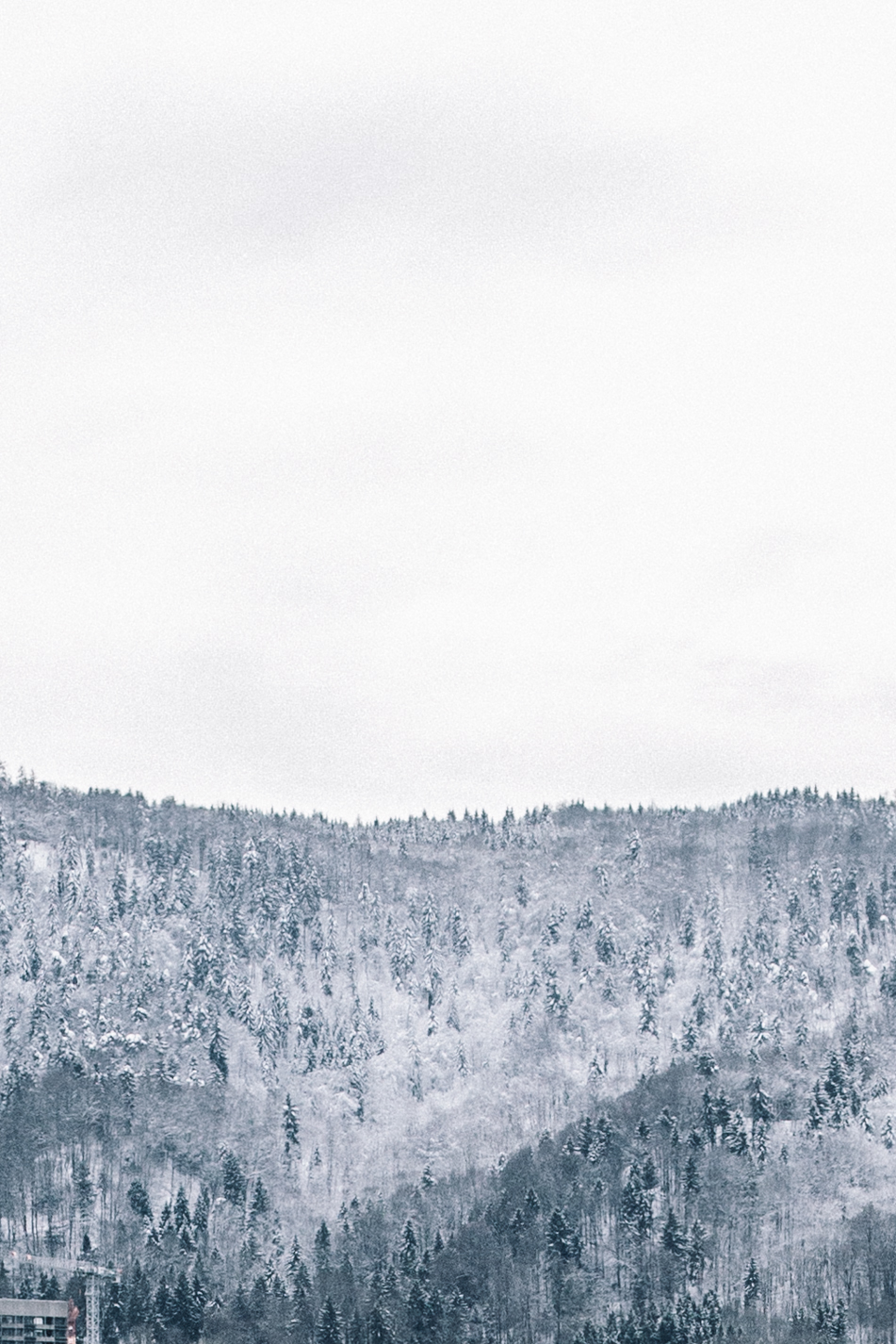
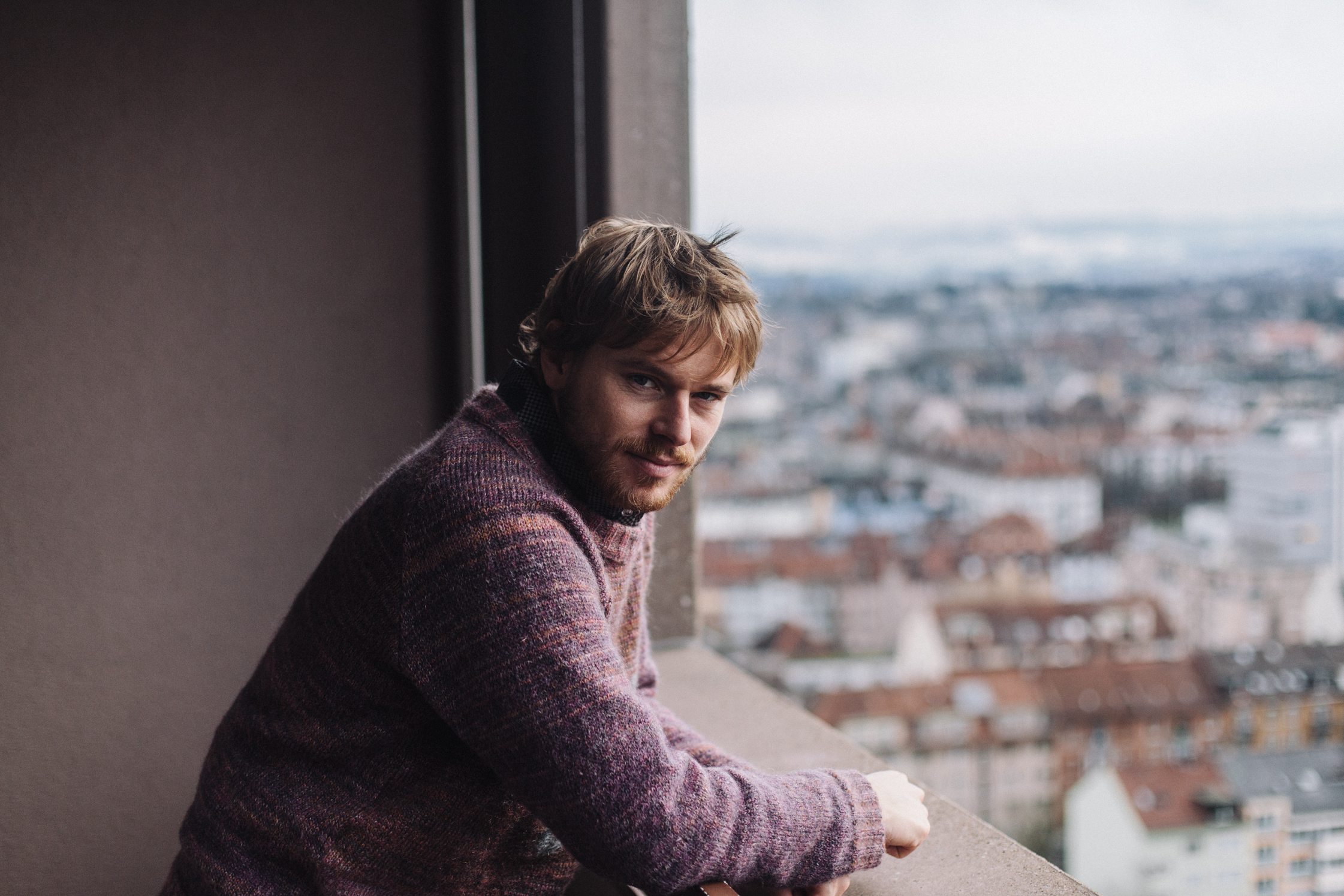
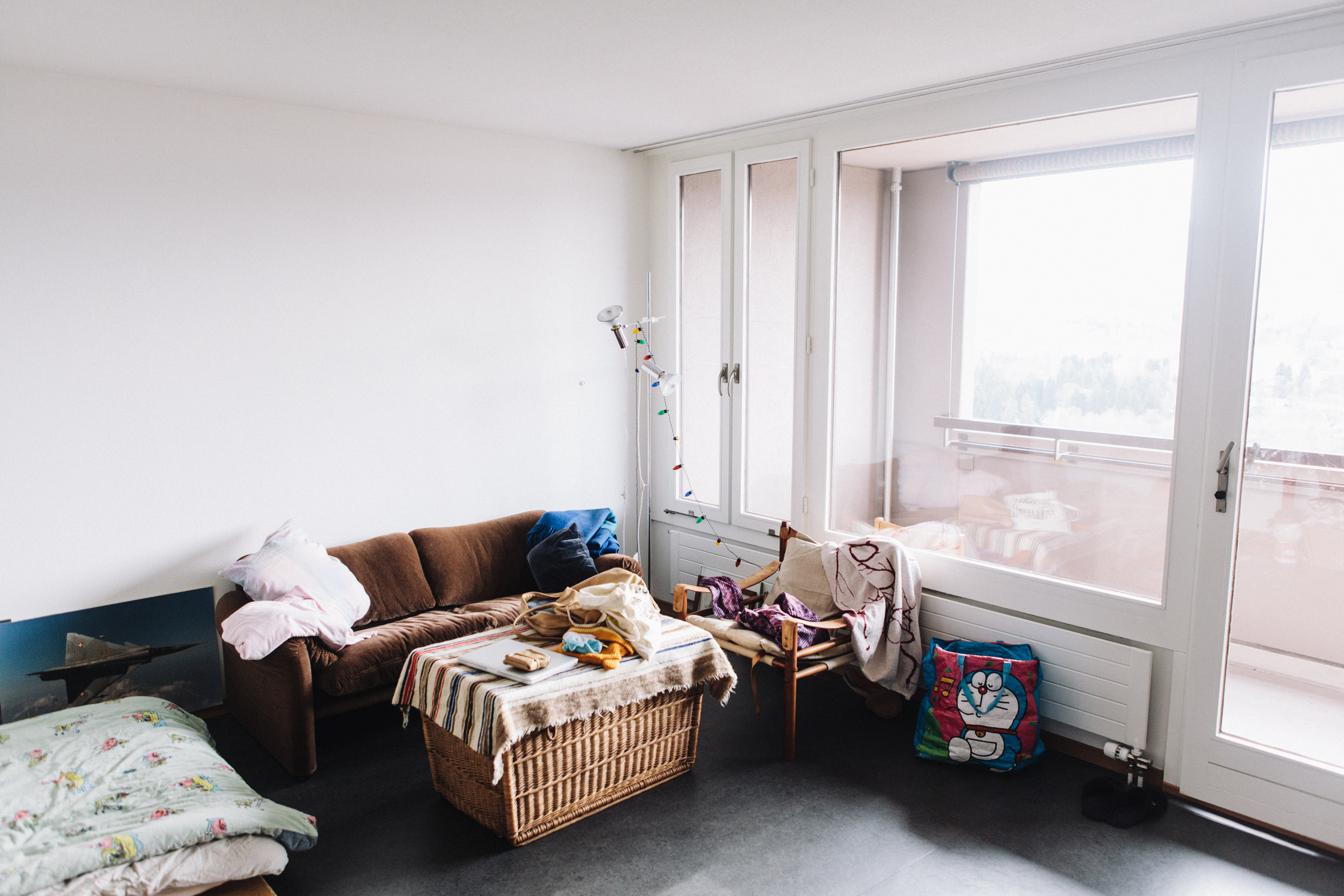
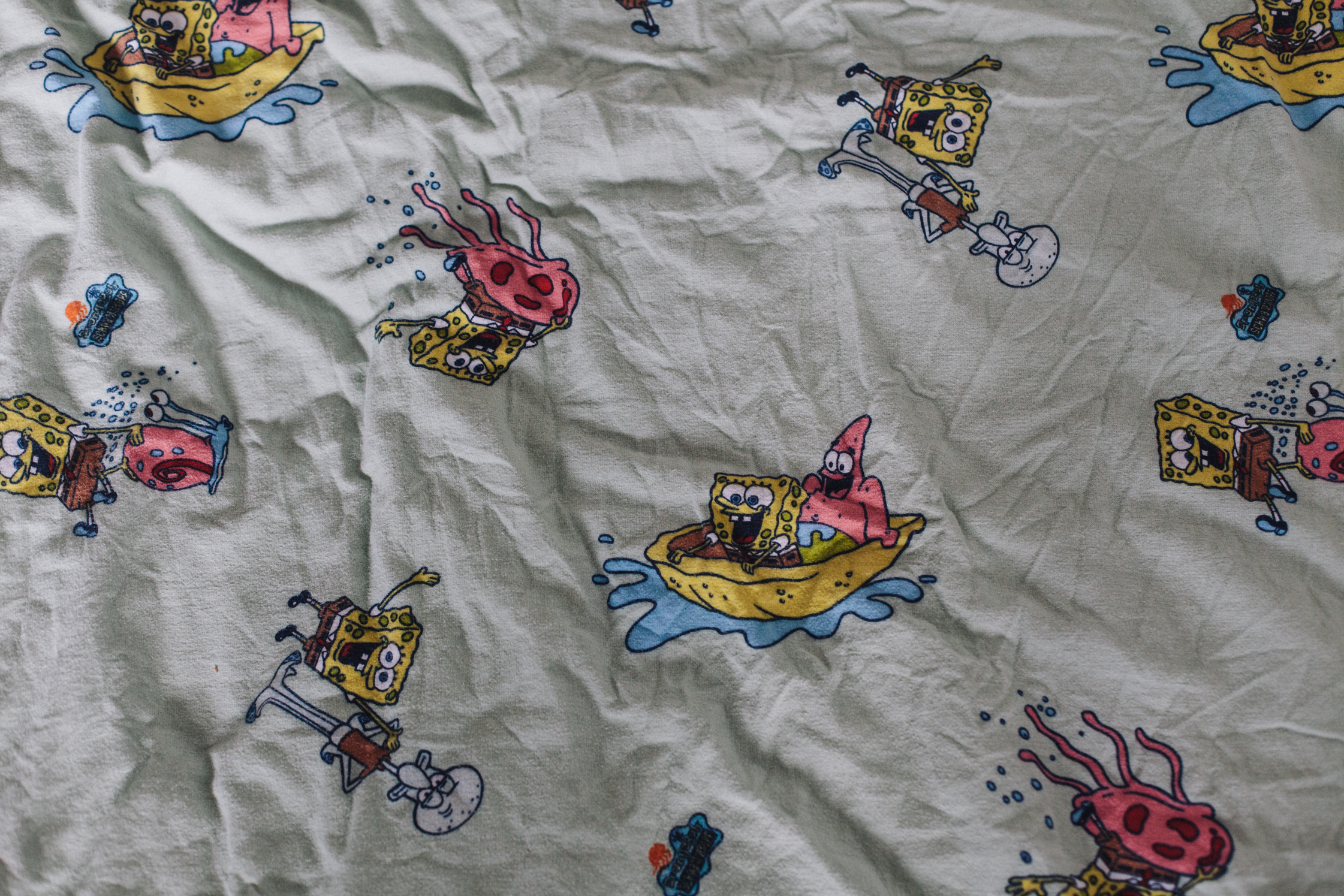
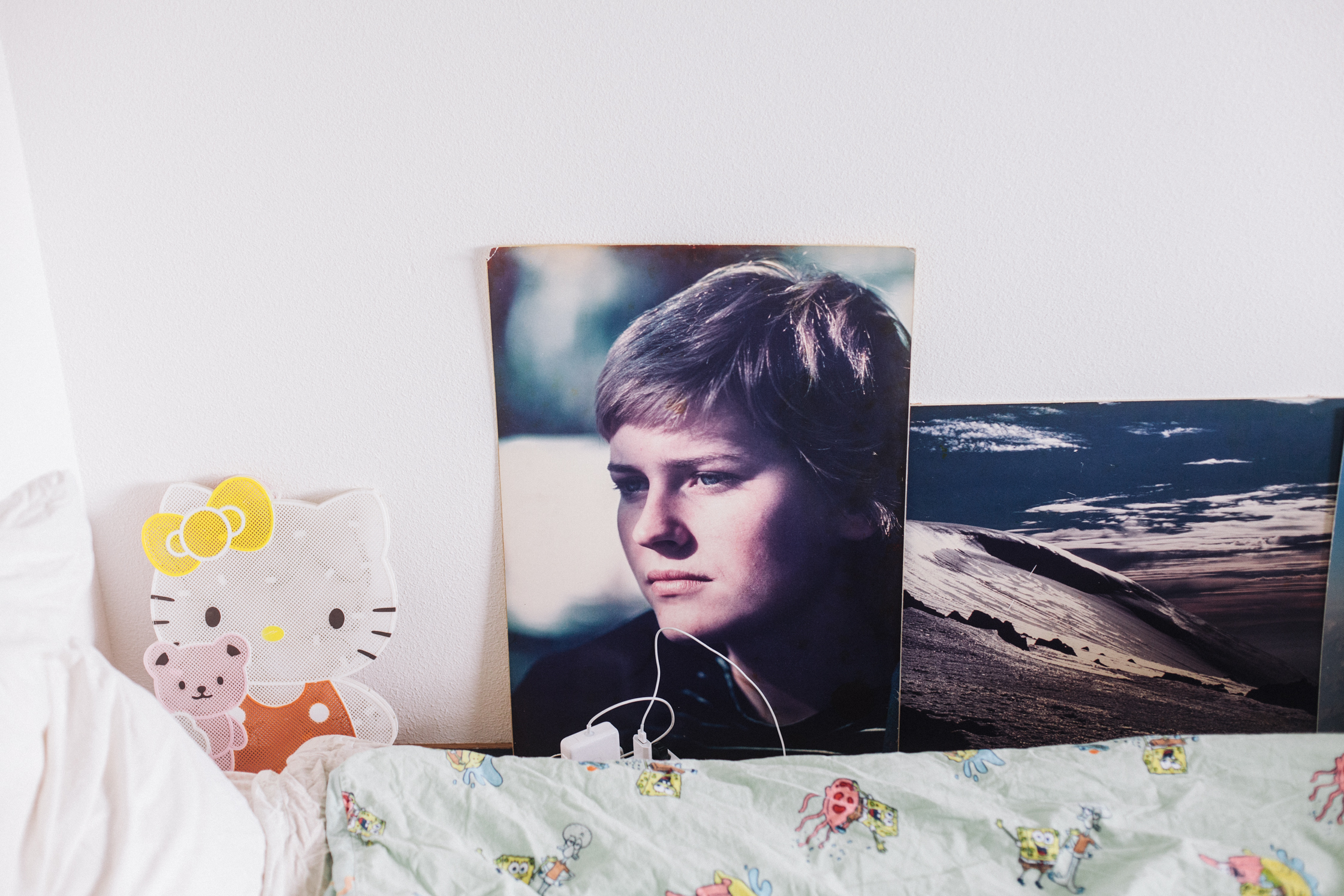
It all started with a now-famous favorite pink sweater from kindergarten. Without finishing high school he moved to Berlin and studied fashion design. Today the 31-year old is the first Swiss fashion designer to show his collection at Milan Fashion Week. Giorgio Armani’s assistant invited him personally. The show was followed by a clap on the back from the maestro himself. Julian Zigerli is flying high. No wonder – in Zurich, away from the fashion hustle, he lives surrounded by heirlooms from his grandparents on the 22nd floor of one of the city’s few skyscrapers.
-
You recently moved into your first apartment in the Hardau high-rises from the 1970s. You can’t live higher anywhere in Zurich.
I only recently found out that it was even possible to live in the towers. They’re city homes. A colorful mix of creatives, seniors, youths and the poor live here, there’s a bit of everything. I can see the morning sun glittering on the lake. In Berlin I had a view of the TV tower. The whole idea of living here was super spontaneous. I moved in on December 23rd and on December 24th my former roommate and friend and I went to buy new furniture.
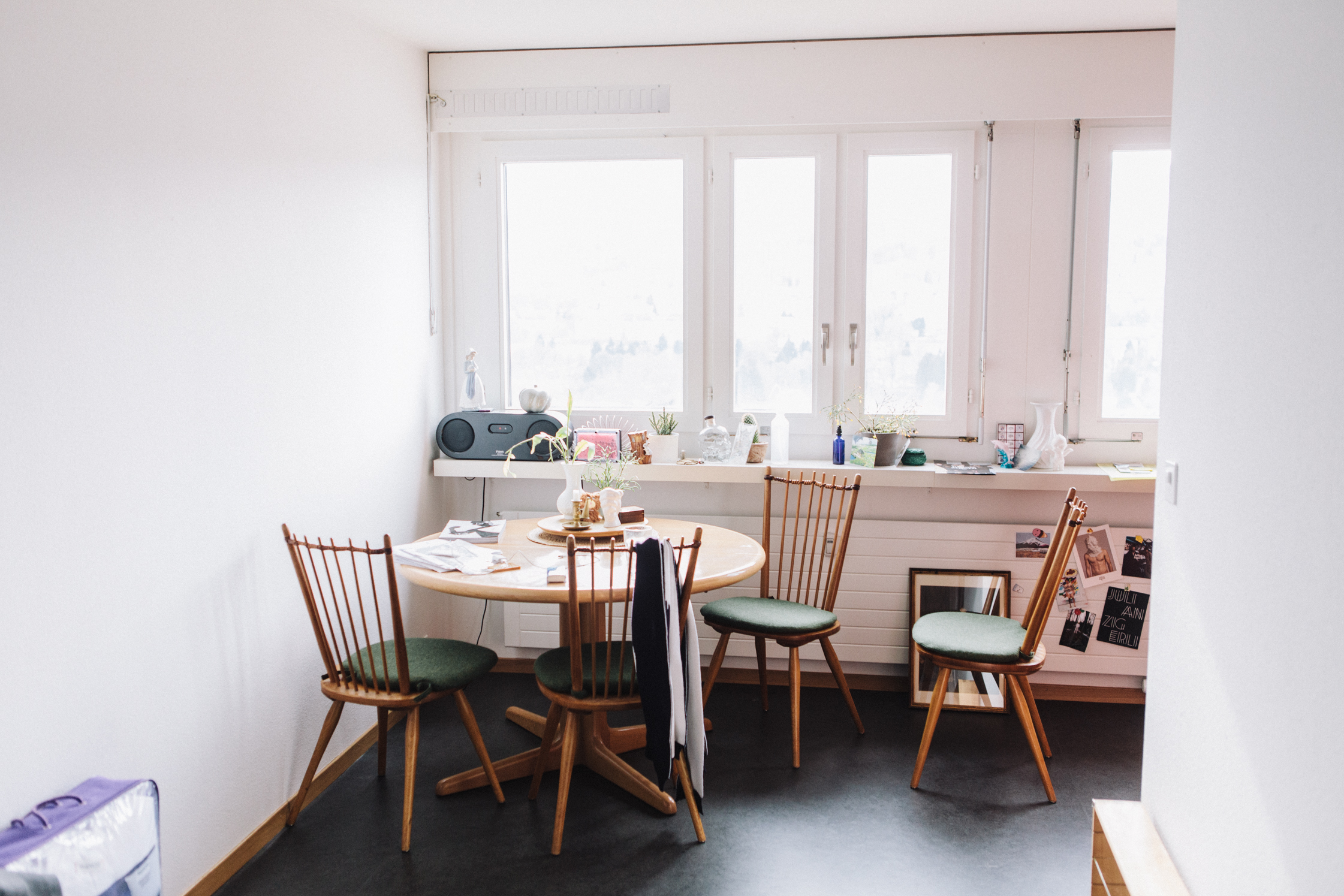
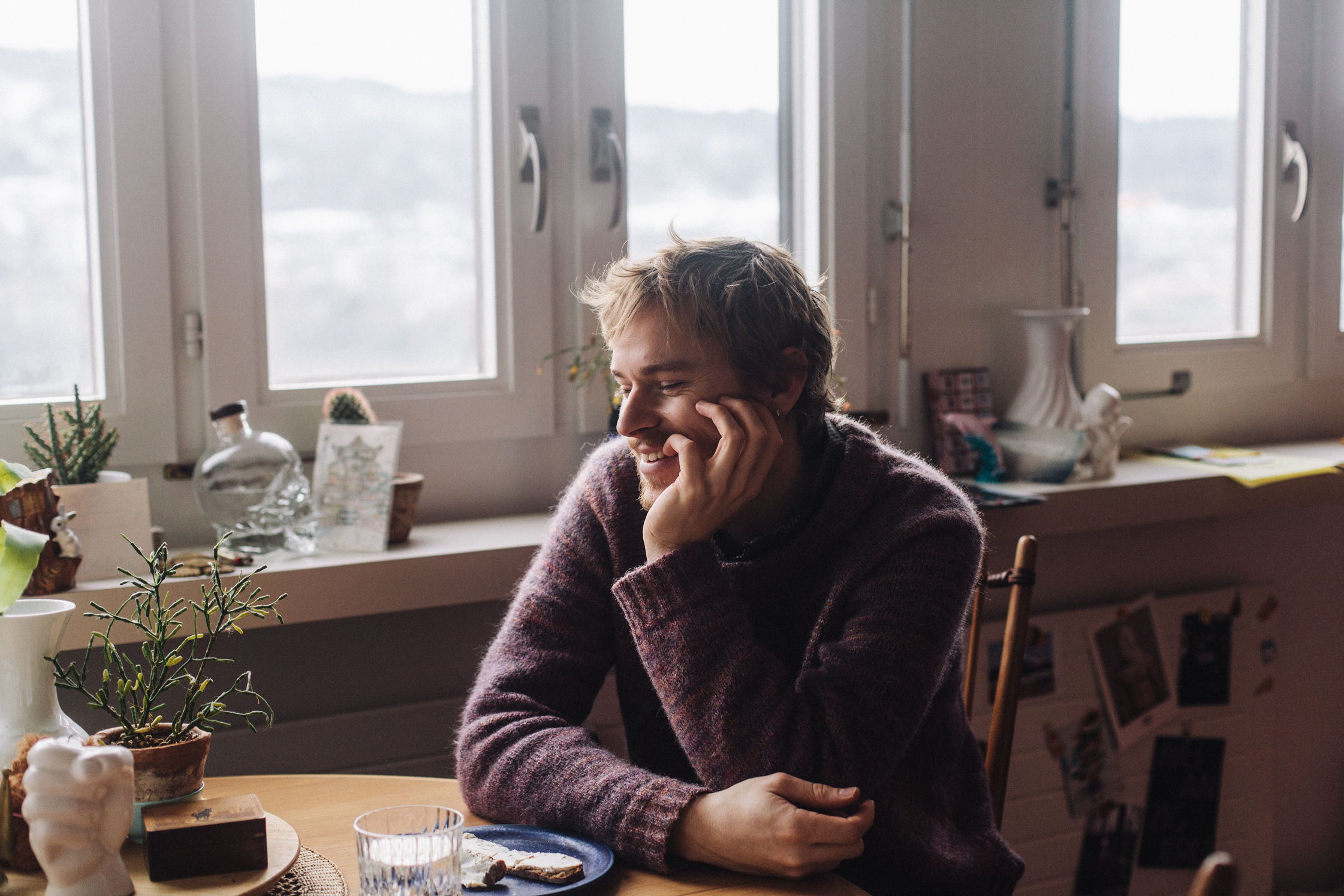
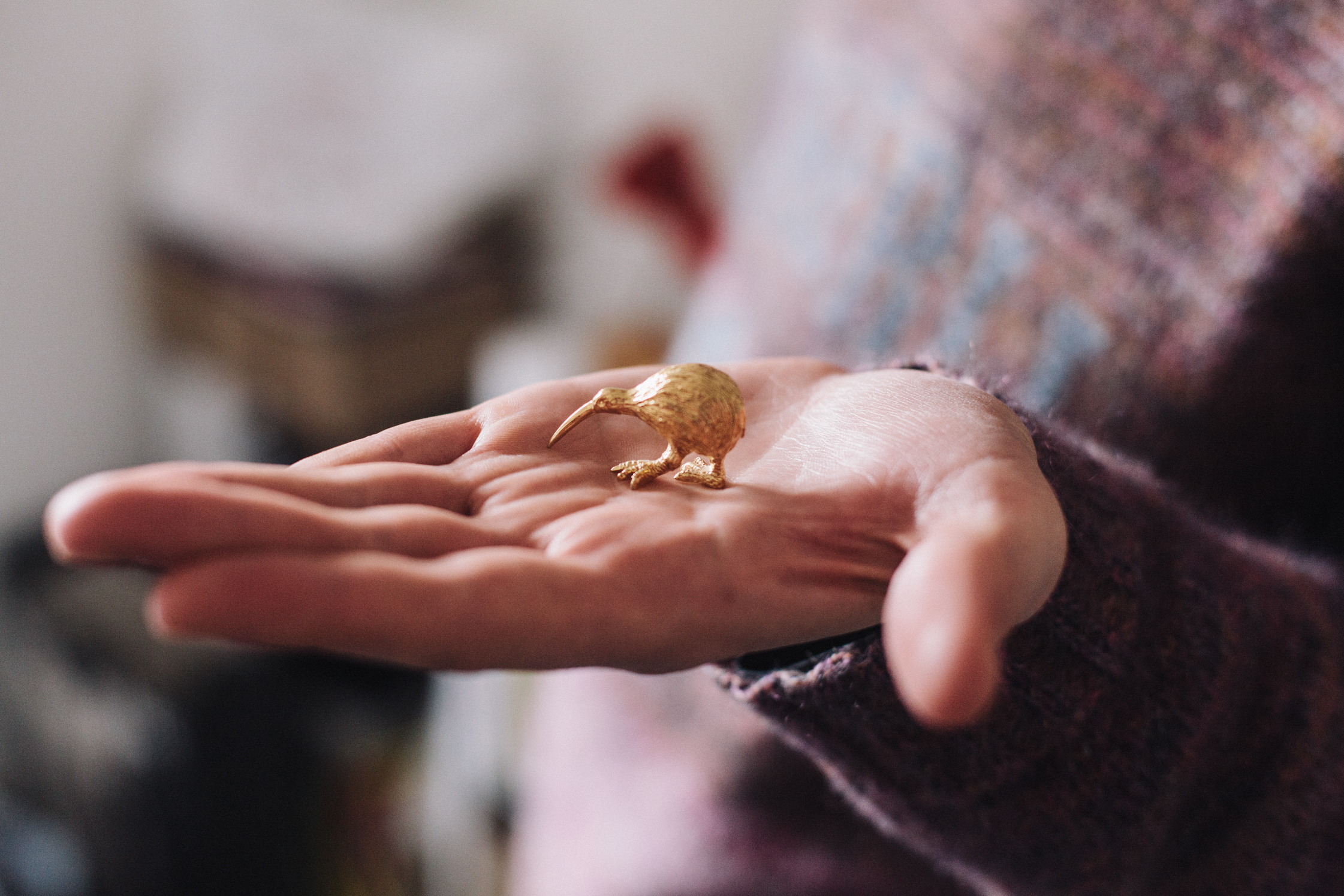
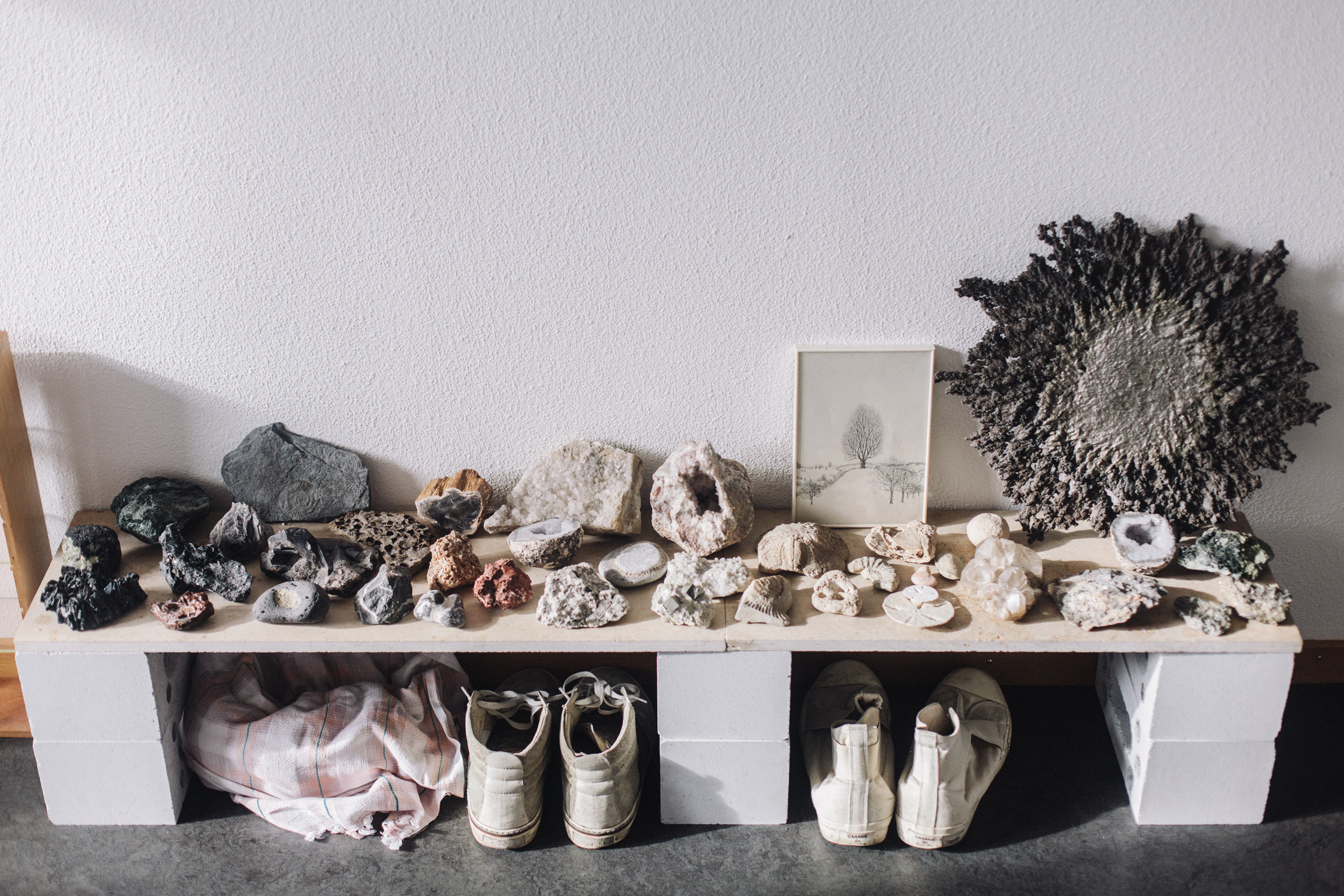
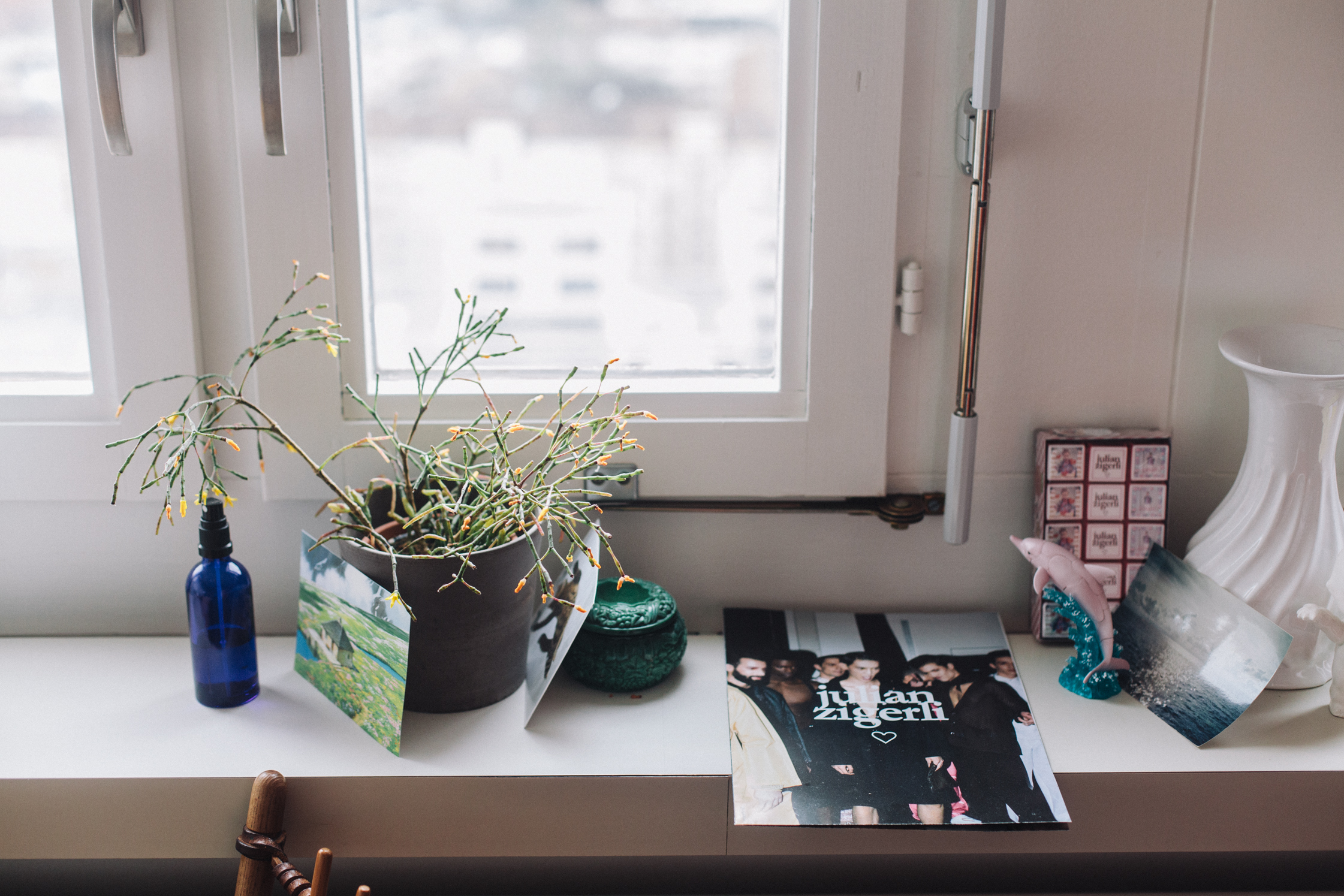
“My nicknames weren’t Susi Serene and Carrie Careless without reason.”
-
You lived in Berlin for six years, but you came back to Zurich after your studies. Why?
I had no desire to be in Berlin anymore. I left my stuff there and applied for jobs in London, New York and Tokyo. In the end I came back to Zurich and created costumes for the Theater Neumarkt. At the time I consciously decided to move to Zurich and start my own label.
-
In the creative scene, a lot of people are moving to Berlin because it’s less expensive and there’s a lot going on.
Sure, but in Zurich you can make ends meet too. I stayed here because it really suits me. The lake, the rivers, the view of the Alps, it doesn’t stink, everything is clean and accessible by bicycle. When my studies were completed in Berlin all of my friends left. There are also an infinite number of young designers. In Zurich not much has changed which allows me the necessary peace to concentrate on working on my collection. I’m constantly traveling anyways, the fashion world is hectic, stressful. In Zurich I can relax and my friends and family are close by.
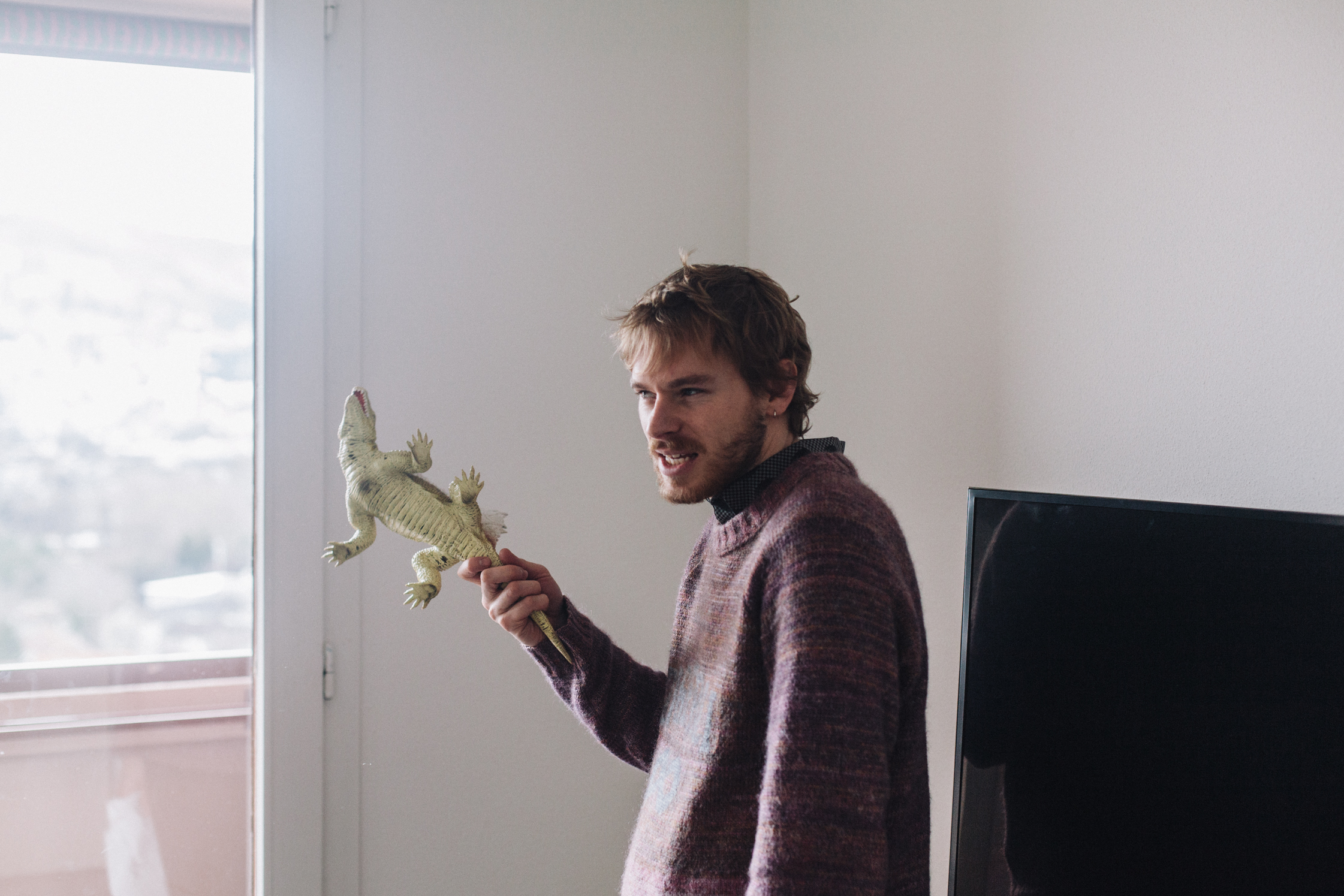
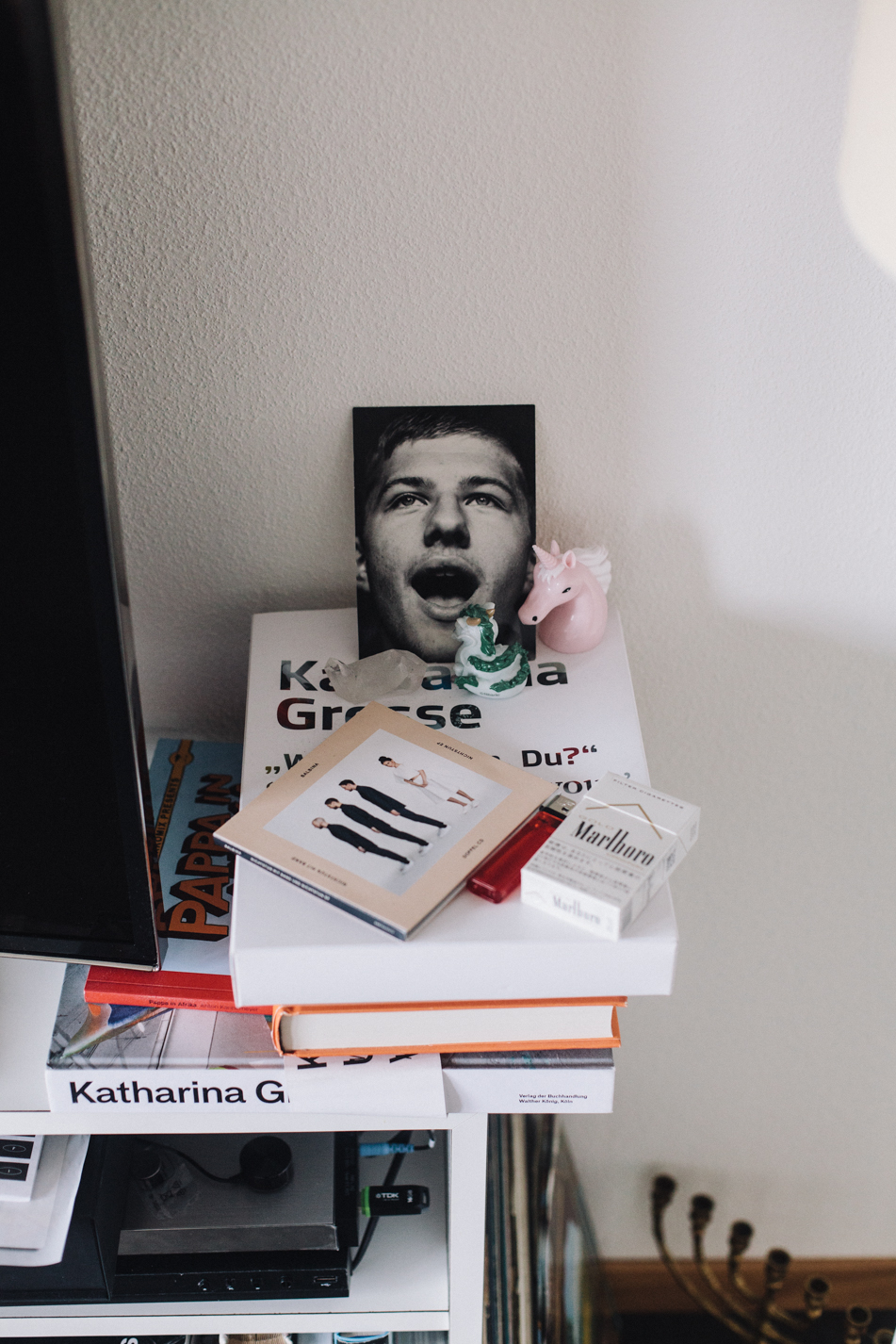
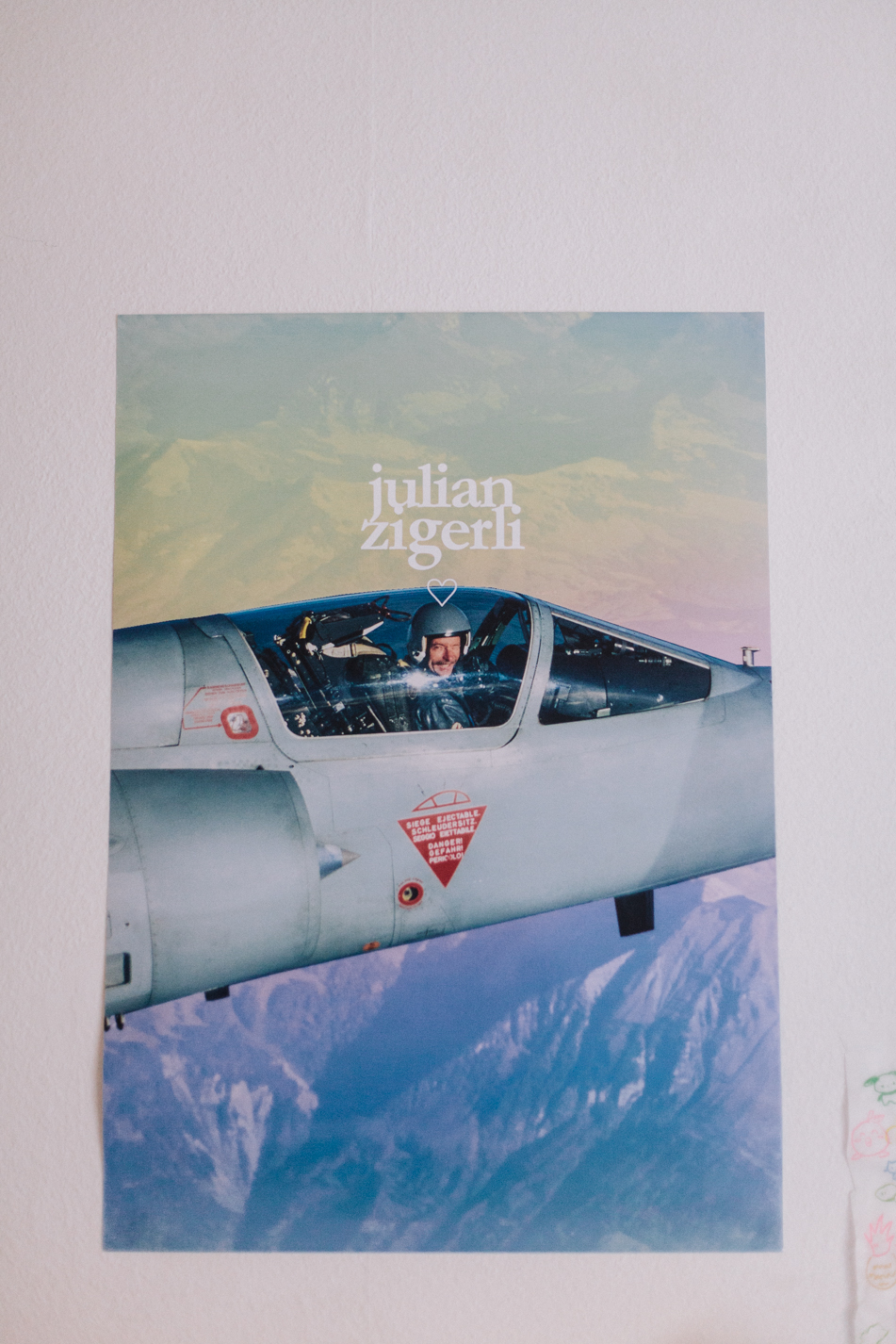
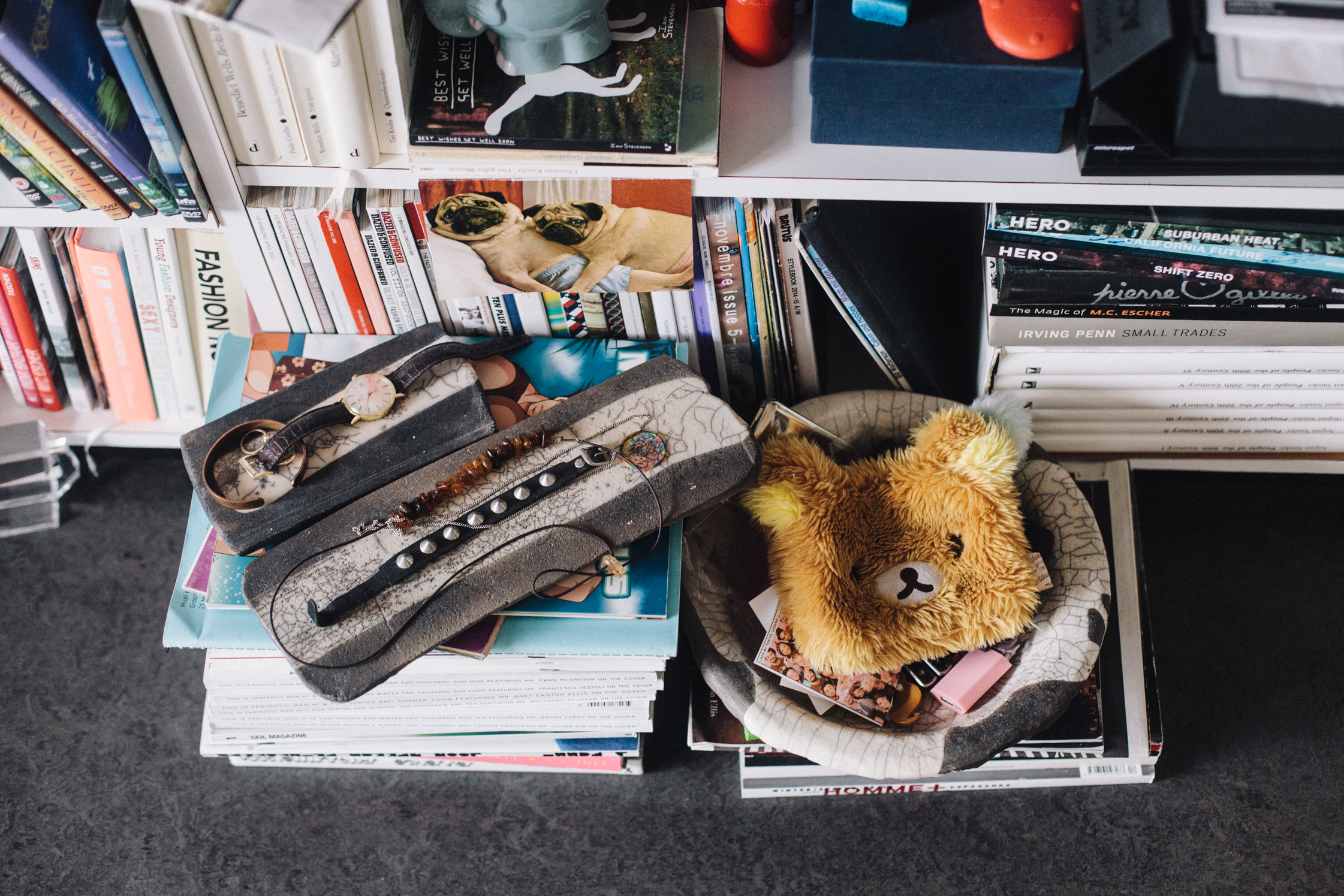
“Dinos will never be boring.”
-
Does your family play such a central role in your life?
Yes. My parents support me in any way they can and also travel to the shows, they know all of my friends. In my apartment, next to knick-knacks from all over the world and three bags of shoes, there are almost only heirlooms from my grandparents. Their round dining table, the alpaca sofa, the standing lamp. The collection of crystal is arranged almost exactly as it was for years at my grandparents: on a marble slab on an old radiator.
-
Speaking of furnishings: What’s with the dinosaur next to the TV?
Dinos will never be boring. I mean, were they purple or blue or orange? We know so little about them – that fascinates me. This is the reason we shot the campaign for To Infinity and Beyond, my fall/winter collection, in the Aathal Dinosaur Museum near Zurich. I bought the one next to the TV in 2012 as I worked on the To Infinity and Beyond collection.
-
You’re unusually eccentric for a Swiss. You say that Snoop Dogg should wear your designs, that Disneyland is a source of inspiration, everywhere your name is there are dancing pandas and smileys.
This is my heart, my being. Sure I work with it. From the time I was small it was always headed in this direction.
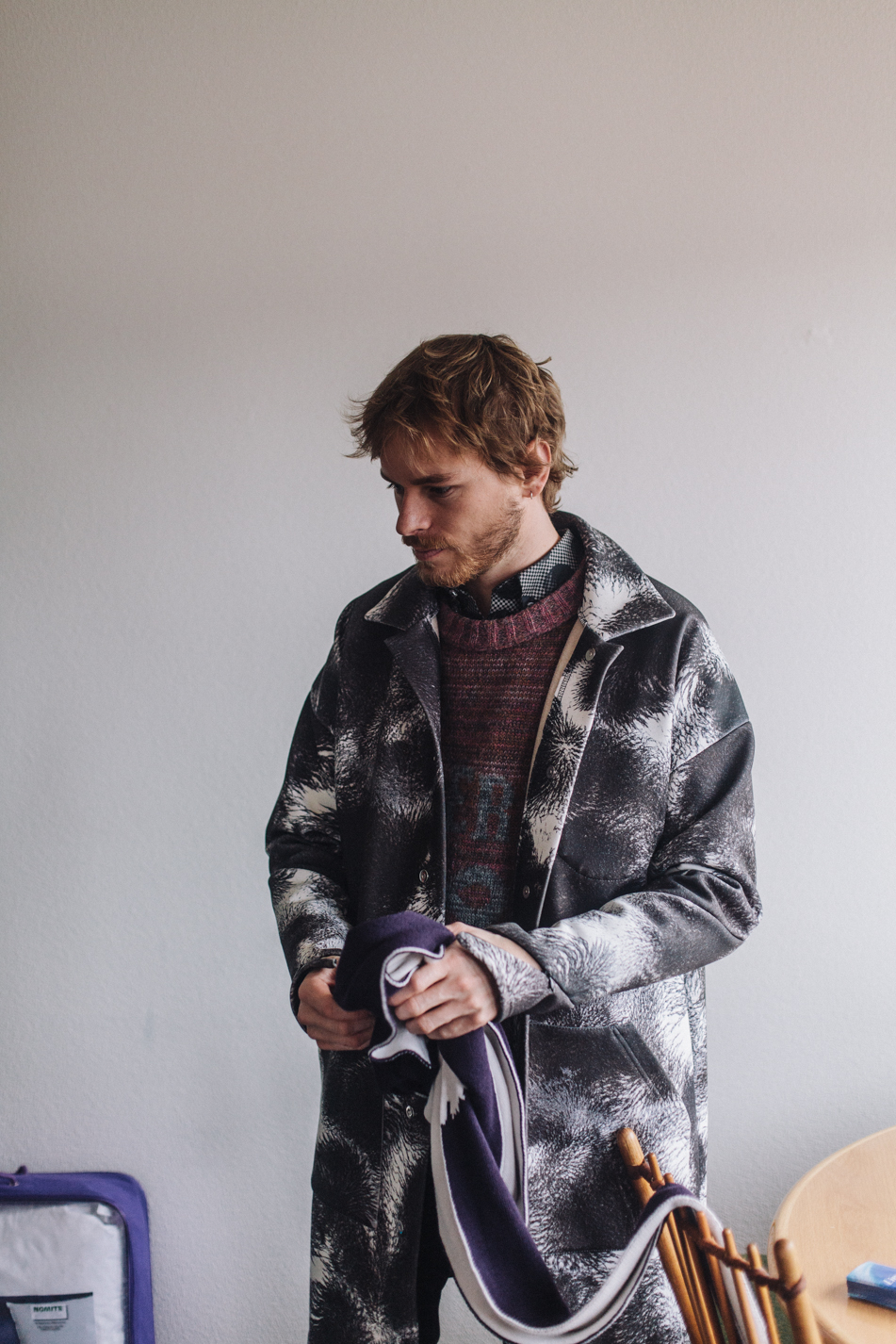
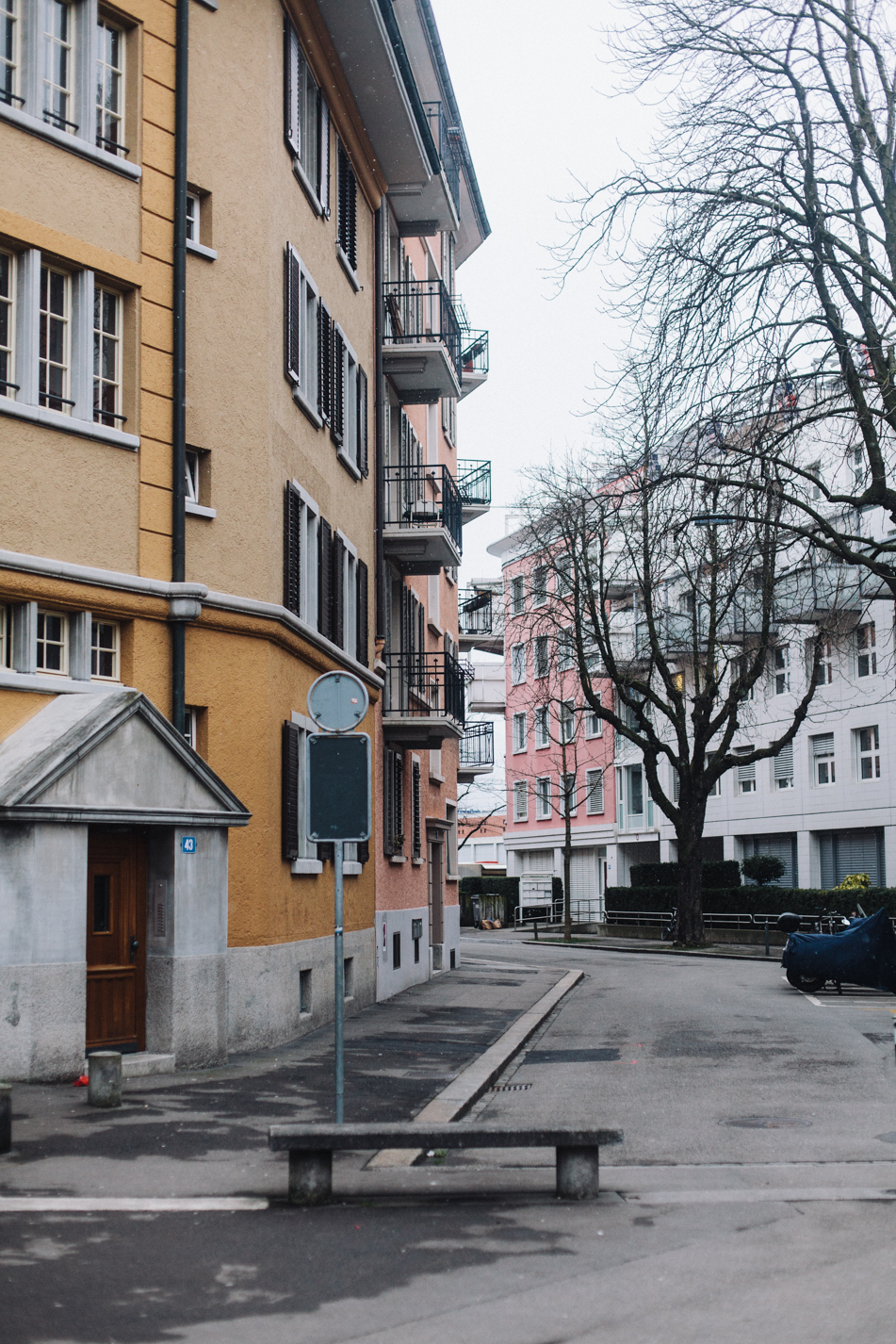
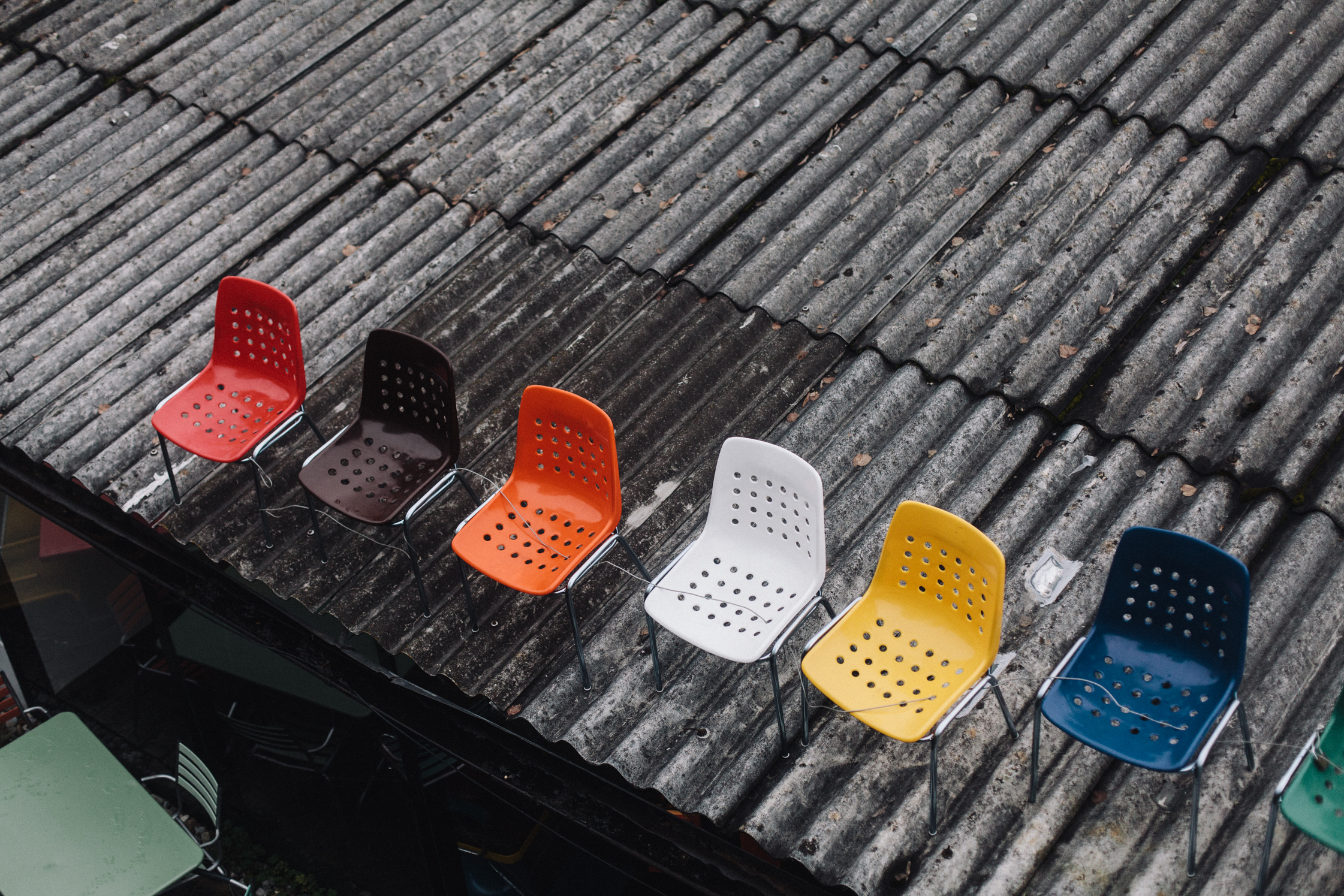
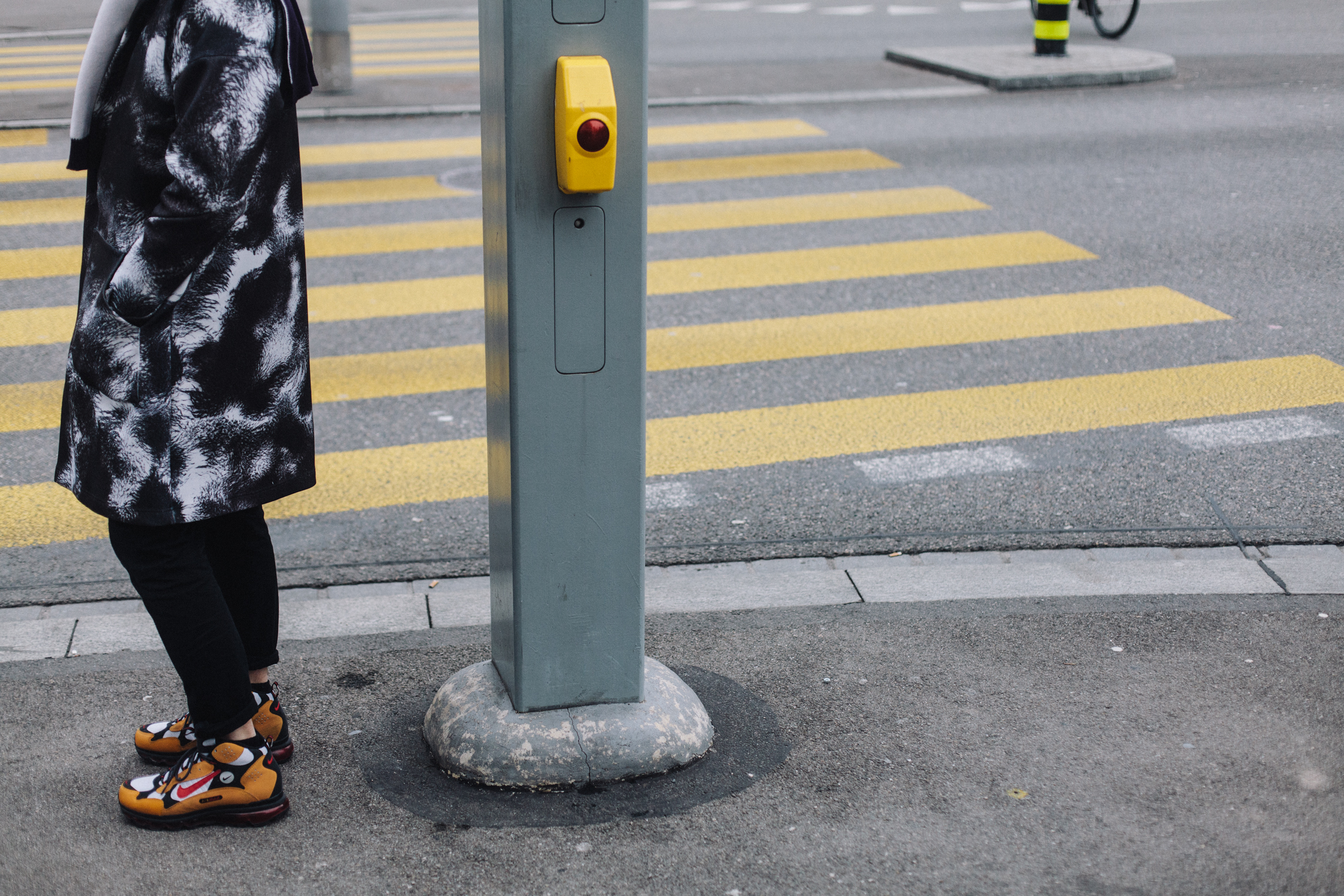

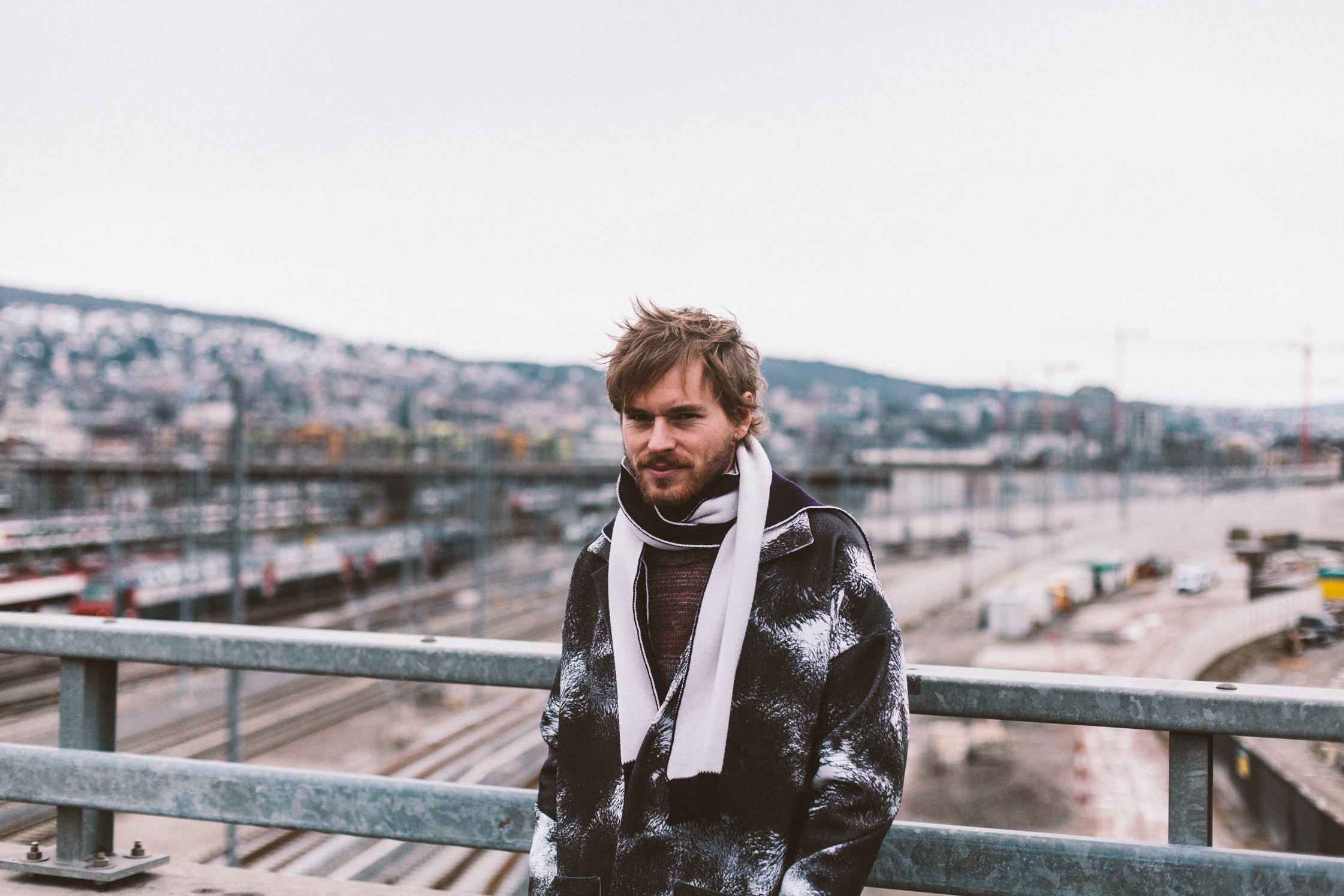
-
You play with the idea of your favorite pink sweater from kindergarten?
Oh, that! When I told a journalist about this pink sweater I knew it would follow me. It’s just a vague memory from my childhood. What I actually meant was that I’ve always swum against the current. I think that, thanks to this inner drive, I found a leitmotif. I’m increasingly committed to it. You don’t lose yourself with a focus. But that has to do with growing up.
-
Have you grown up?
The last three collections have been a step forward, I felt it. My fashion isn’t as playful as it was; it is still funny, but no longer “only.”
-
How is it visible, this idea that your collections are not longer so playful?
The label in general has grown, the collections are bigger. I have much more range, more room to play. I have to develop the whole history that exists behind a collection into, not just 15, but now 27 looks. This means that because of the increased number of pieces I have the opportunity to bring in more simplicity, which rounds off the whole thing.
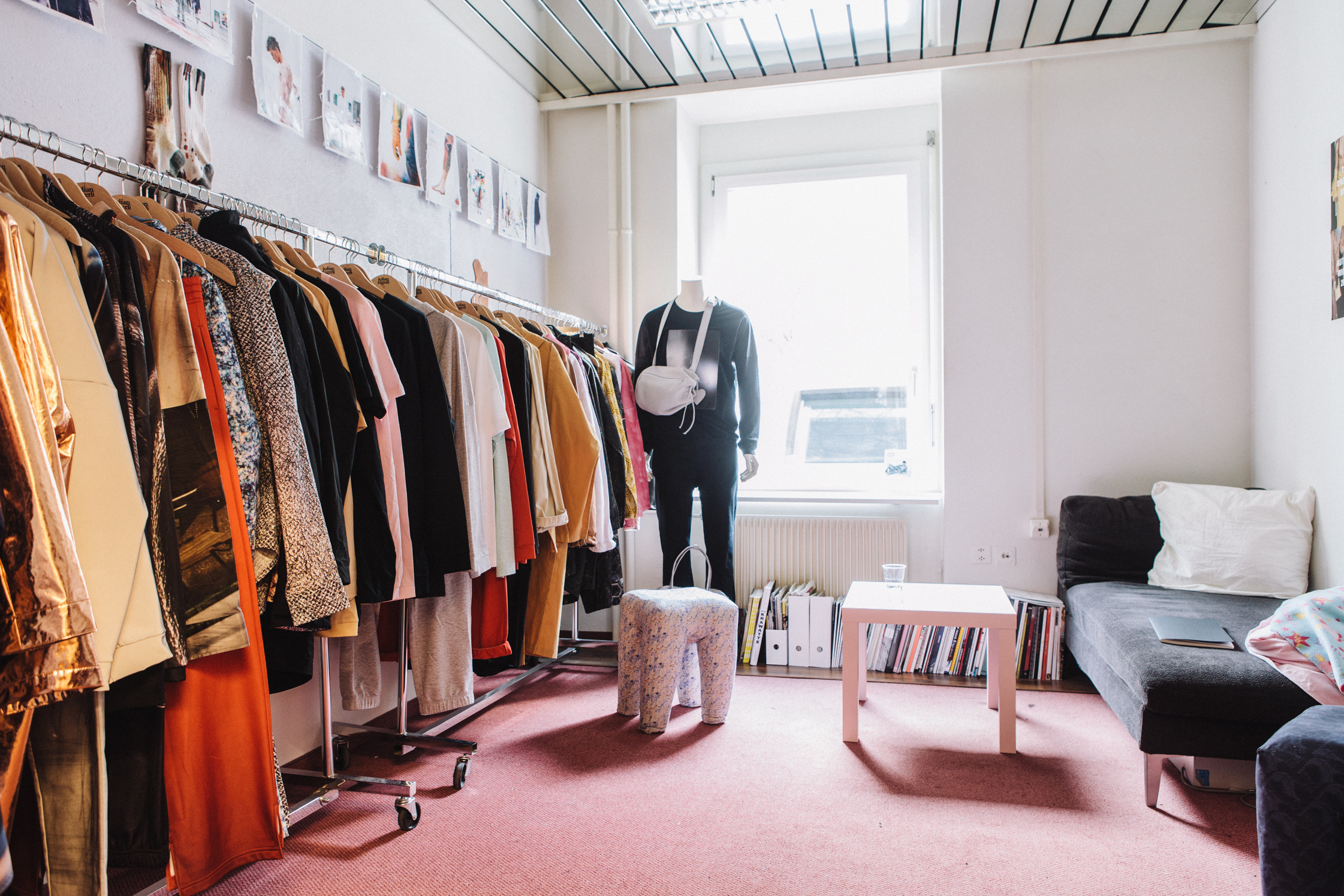
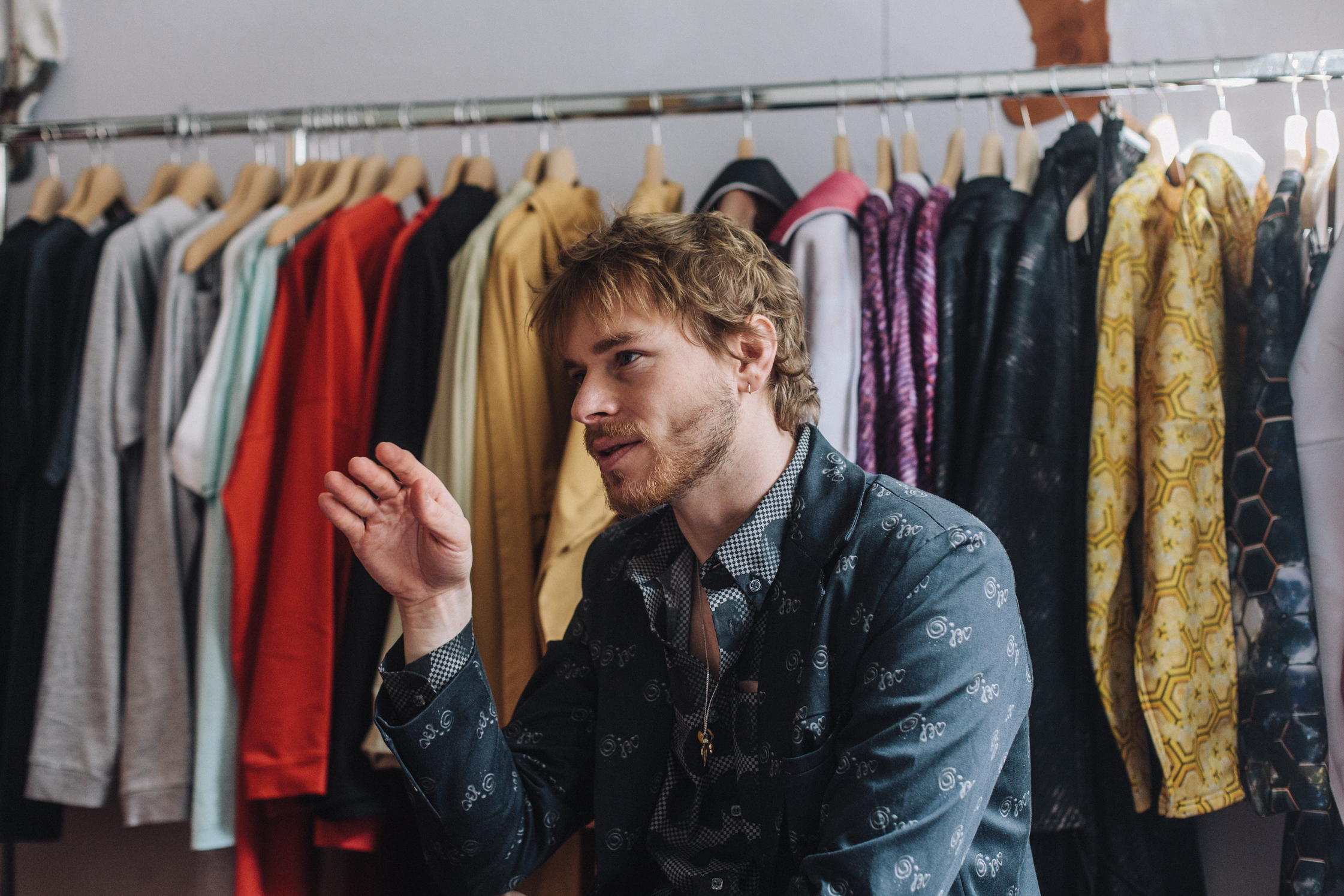
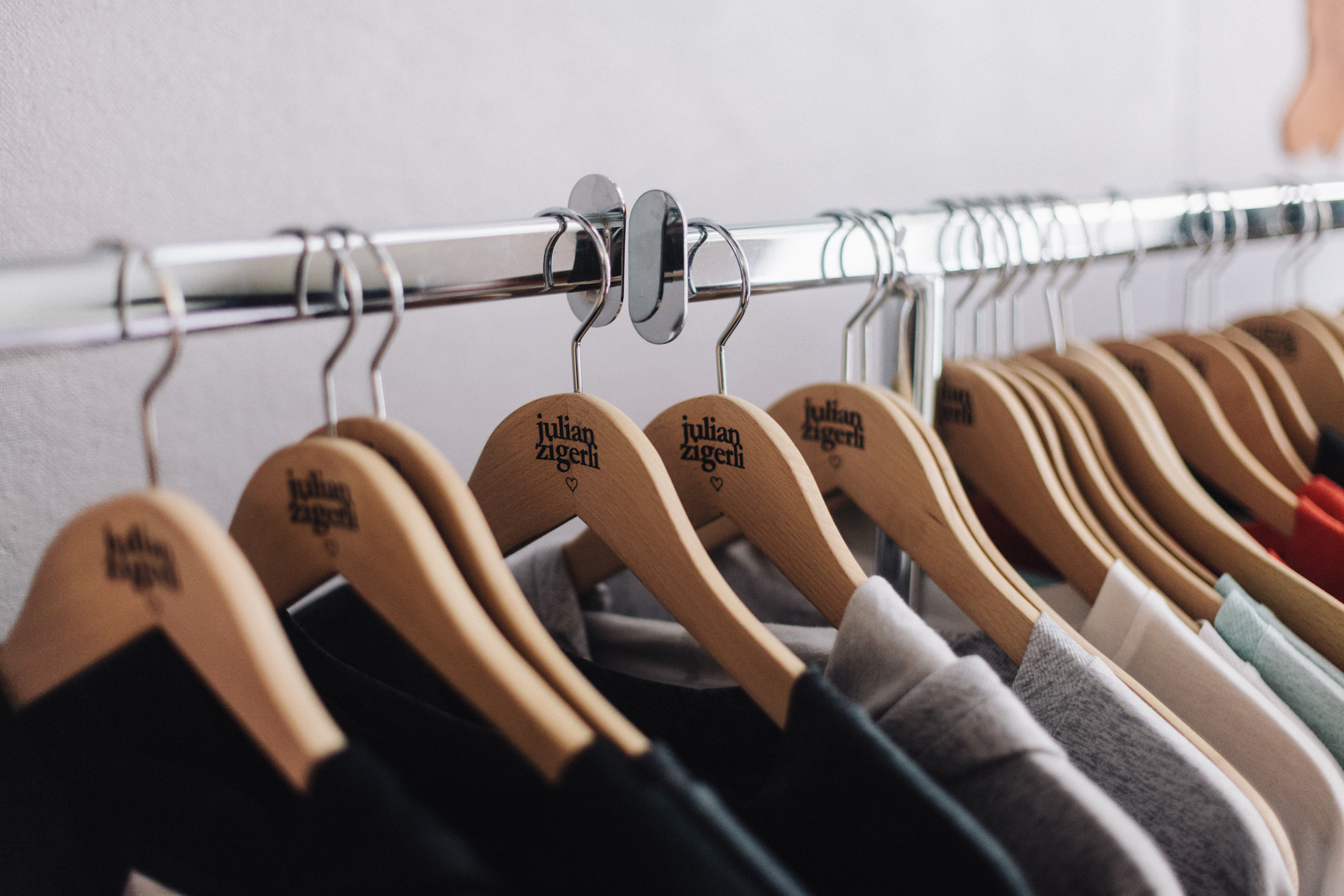
-
What do your fashions mean to you?
When it comes to sales it’s just a pair of pants or a top. When I’m designing I build a complete world around it. It’s extremely important to me that these two things are separate from each other. Exactly because I make looks that are so strong and present them as monochrome prints as well. Not everyone understands that. It often happens that people are surprised when they put a shirt from me on and realize: “Ah, the pieces from Julian Zigerli really aren’t so crazy.”
-
You yourself say that the world around your collection is wild. How does it develop?
It’s hard to describe. It’s a kind of architecture. It always happens differently. I usually have a title or a feeling or an imaginary place in mind. Everything happens in parallel. That’s my favorite way to work. The whole print stories happen to coincide with the stories of the cut, that’s how everything fits together. A shirt doesn’t just mean work in terms of cut and fabric, but also in print.
-
How’s the sale of your collections?
In Switzerland it’s difficult. The buyers for important or unconventional shops have been interested in my collections from the beginning, always giving me super feedback, but they don’t trust themselves to place an order. Something like this takes time to develop. In Japan I sell really well. But my fashion works in more than just one country, it’s much too individual.
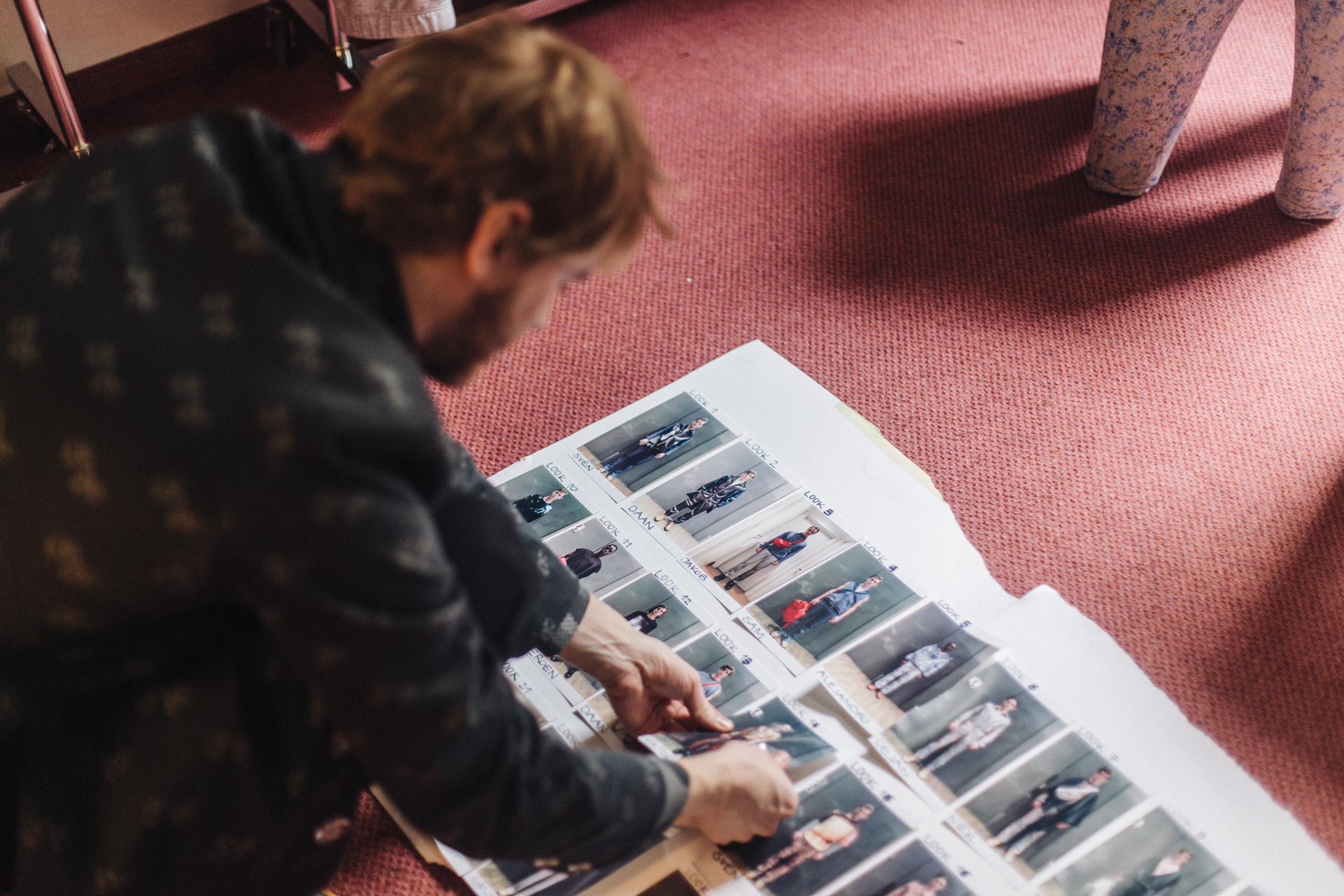
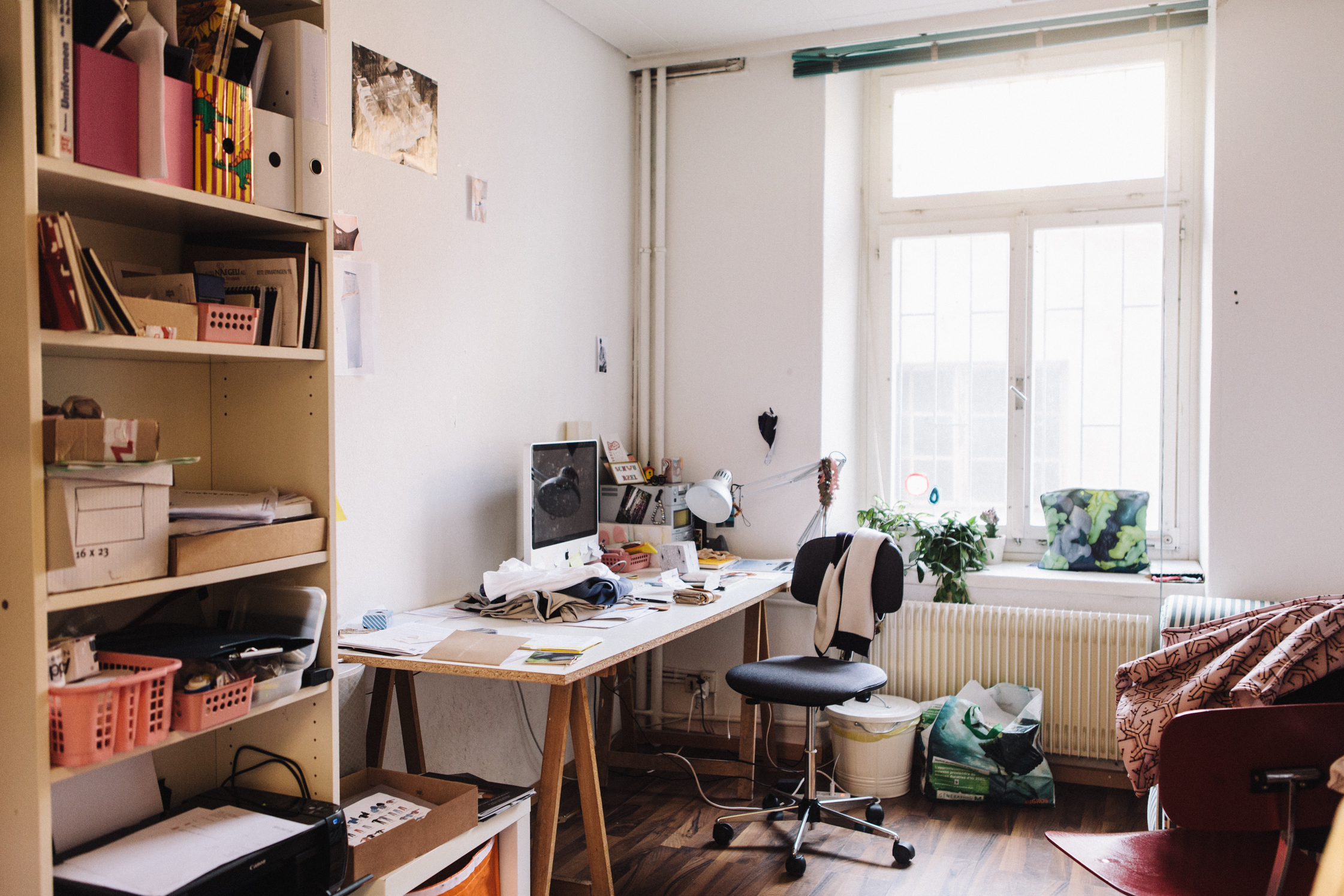
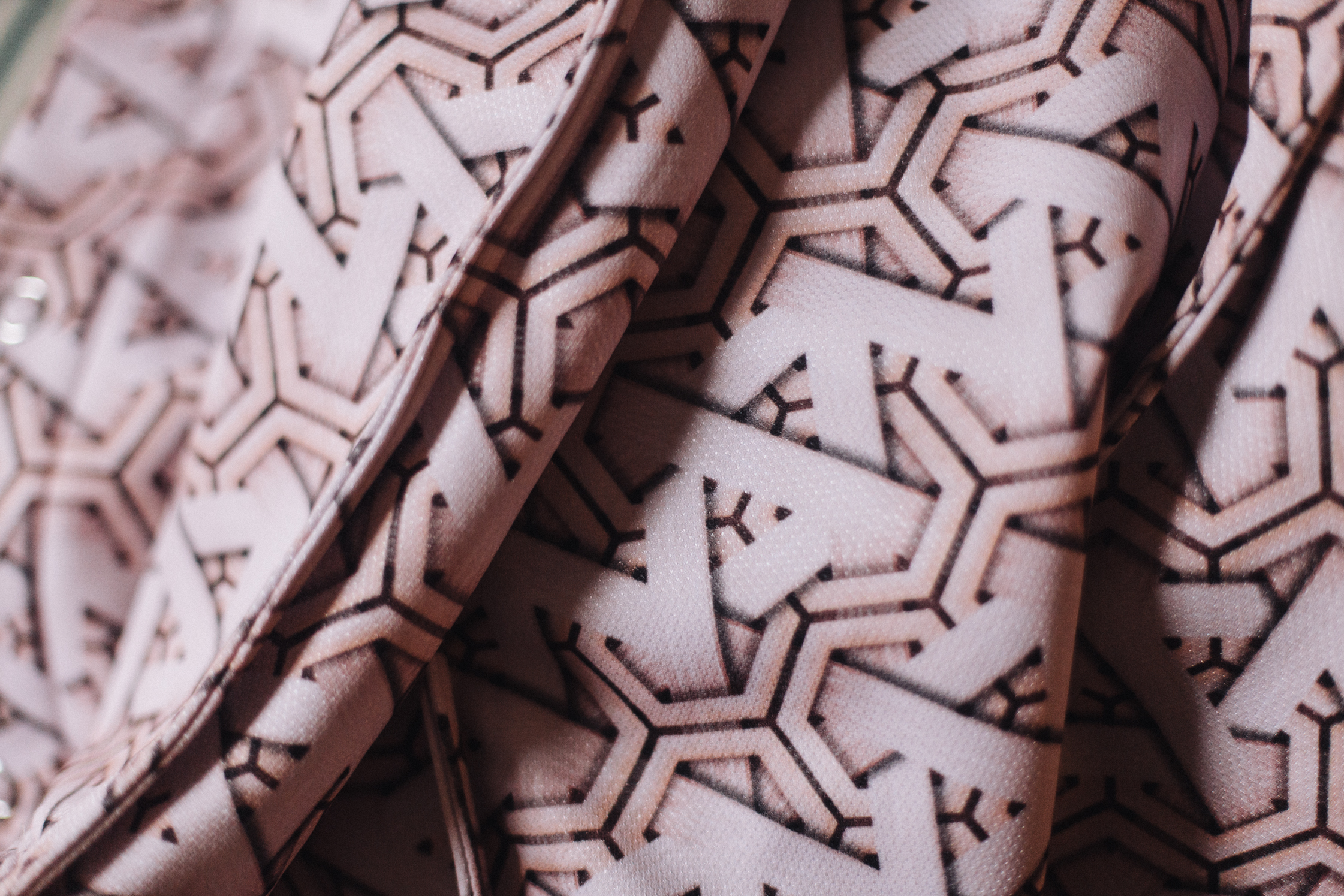
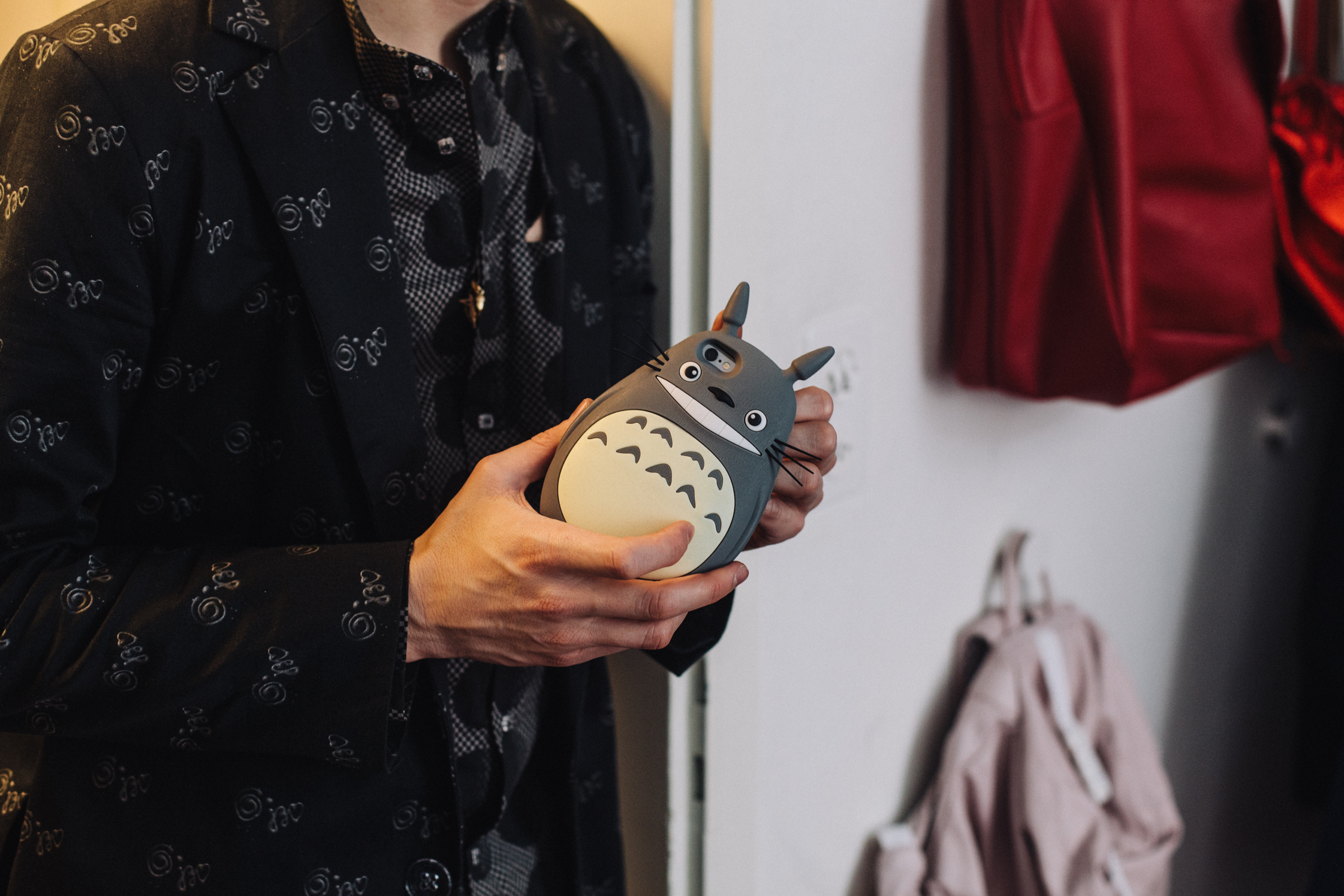
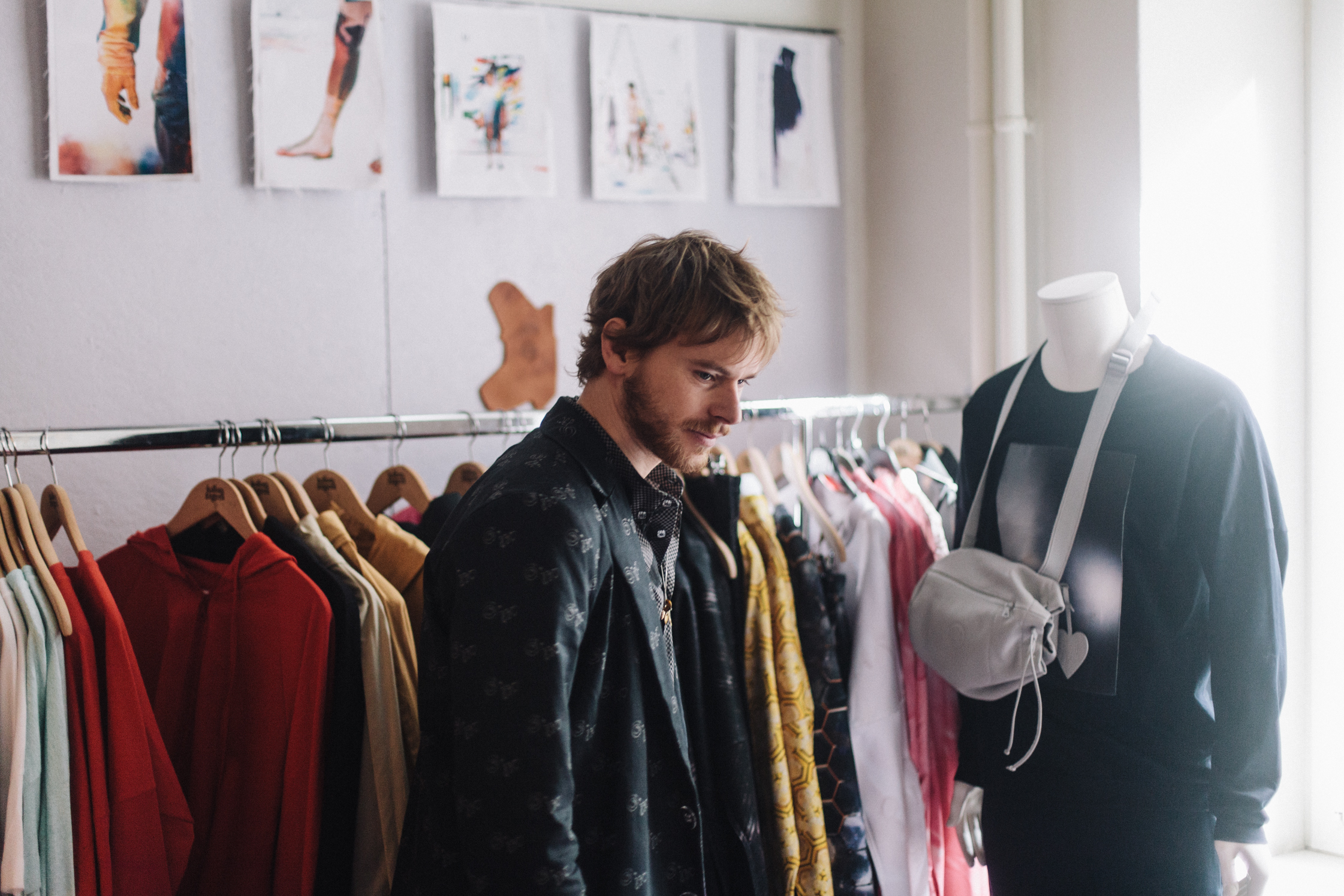
“My fashion works in more than just one country, it’s much too individual.”
-
Does your success in Asia have to do with social media?
Overall, I think so, the internet has helped my label to become better known. Especially when I want to sell internationally. But I’m not sure if the Asian market works well because of social media. I was just in Japan for three weeks, Instagram is widespread, but I didn’t have the experience of the Japanese being very active. In China, Facebook and Instagram are blocked, that much I know. So I’m not reaching them that way. But Asians just work differently, they understand my aesthetic
-
Some of your collections have already been presented on the internet.
Yes, you can reach a lot of people with the medium. This was the way collaboration with Parisian design trio The Golgotha for The One and Only, the 2014 Fall/Winter collection, came about. The guys saw my stuff somewhere and contacted me via Twitter. In the end they created all the prints for The One and Only. Also this season’s summer collection, which will be in stores soon, was to an extent, created over social networks.
-
You mean you also collaborated with Daniel Pitout, the singer of the Canadian band Eating Out, because of social networks?
Exactly. At some point I read about Daniel Pitout and found him exciting. He’s a punk rocker, skater and openly gay. A rare mix. I listened to his music and looked at the videos. They’re really nice: summer vibes, skating, Los Angeles. I liked it. We wrote via Facebook. That was a year ago. Then he wrote the song “Life is One of the Hardest” for the new 2015 summer collection. And because he’s a very attractive man, we flew him in for the campaign and fashion video.
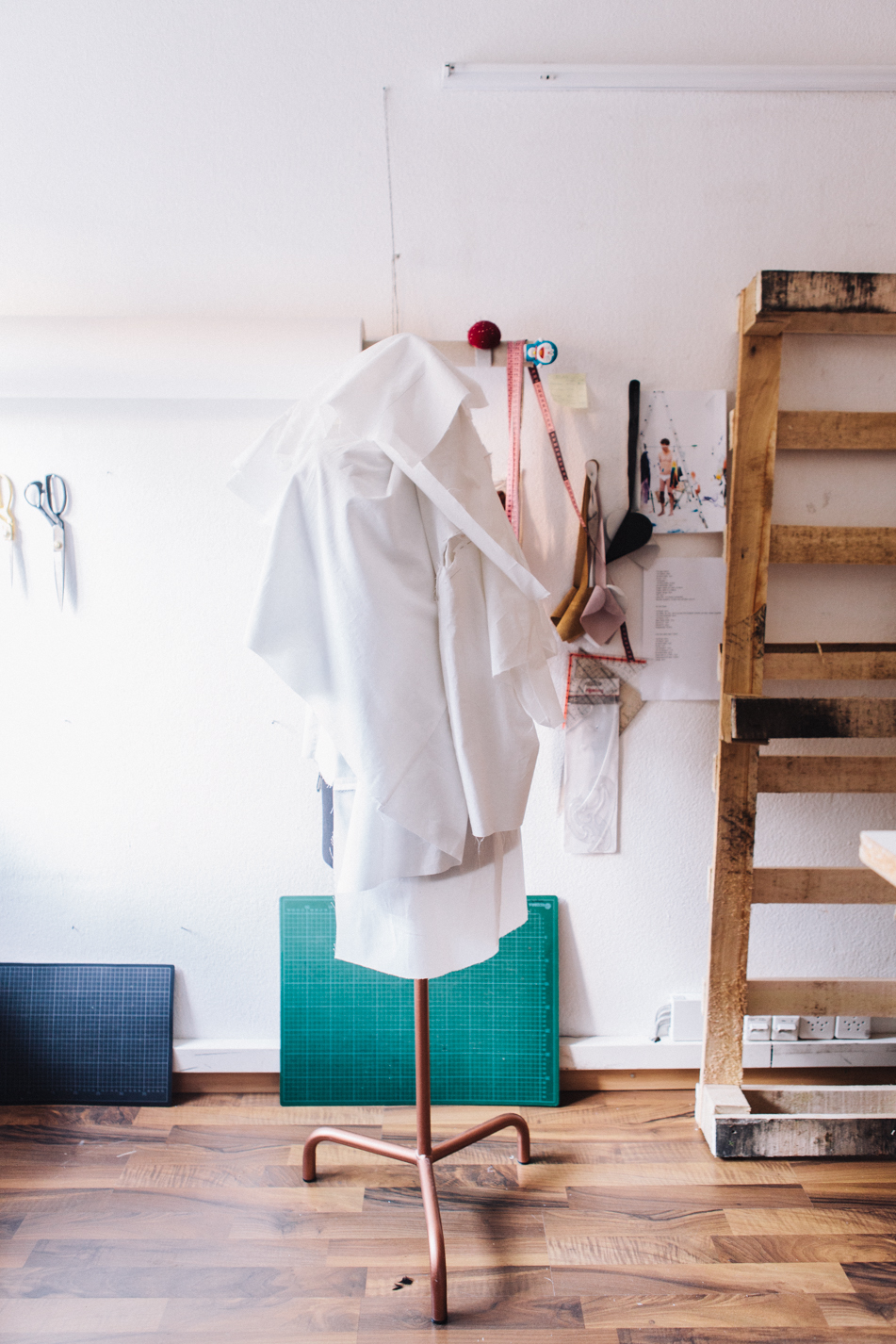
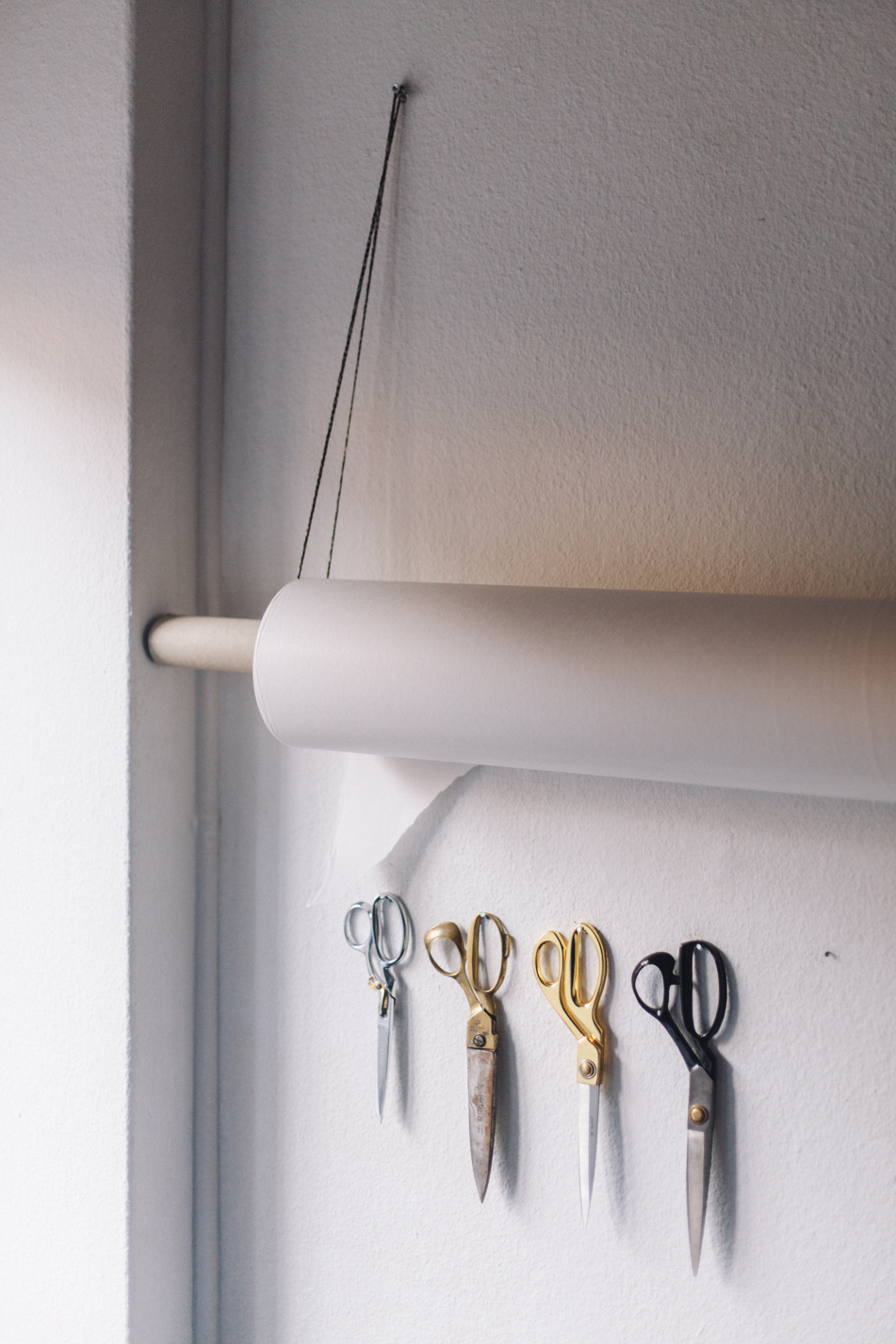
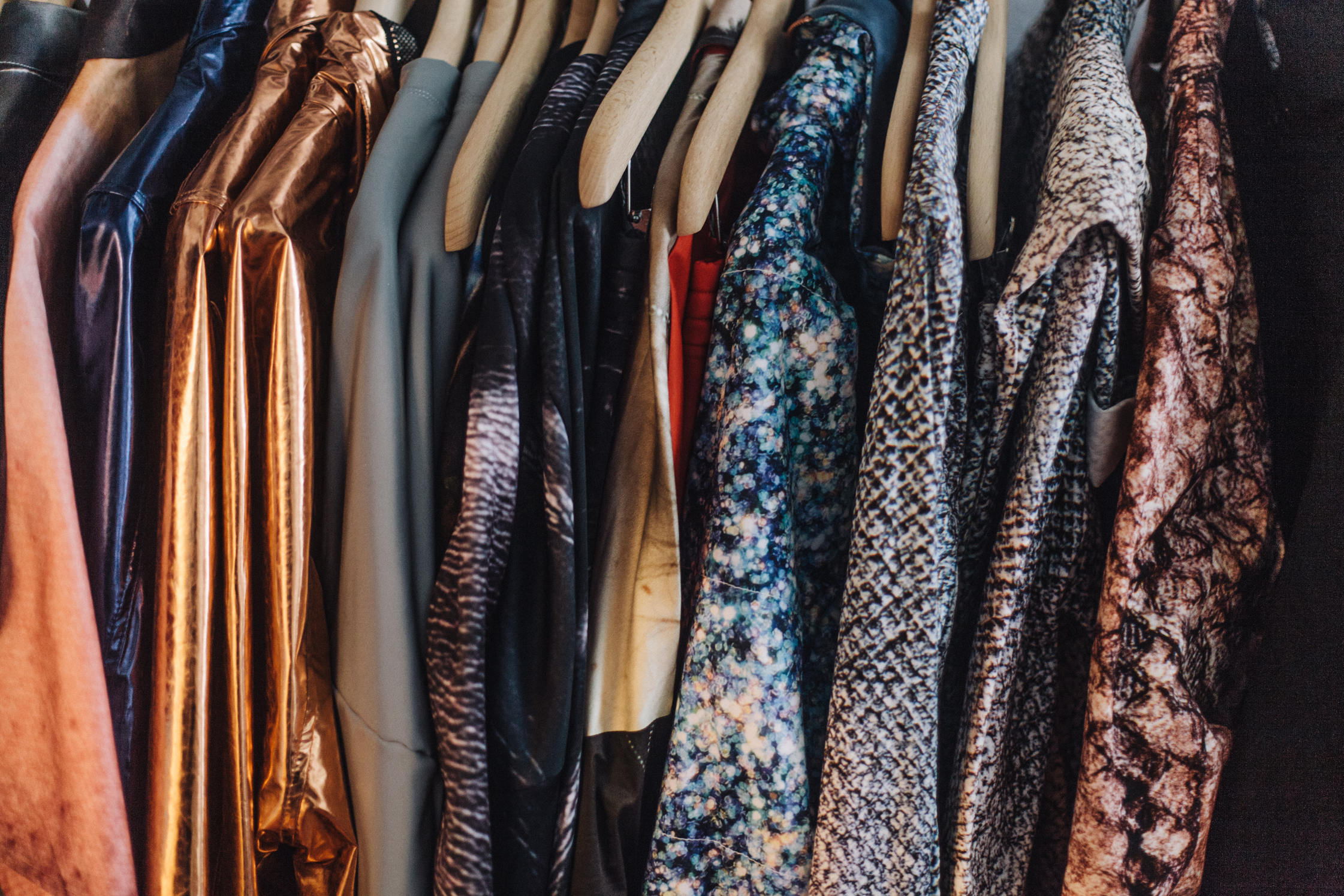
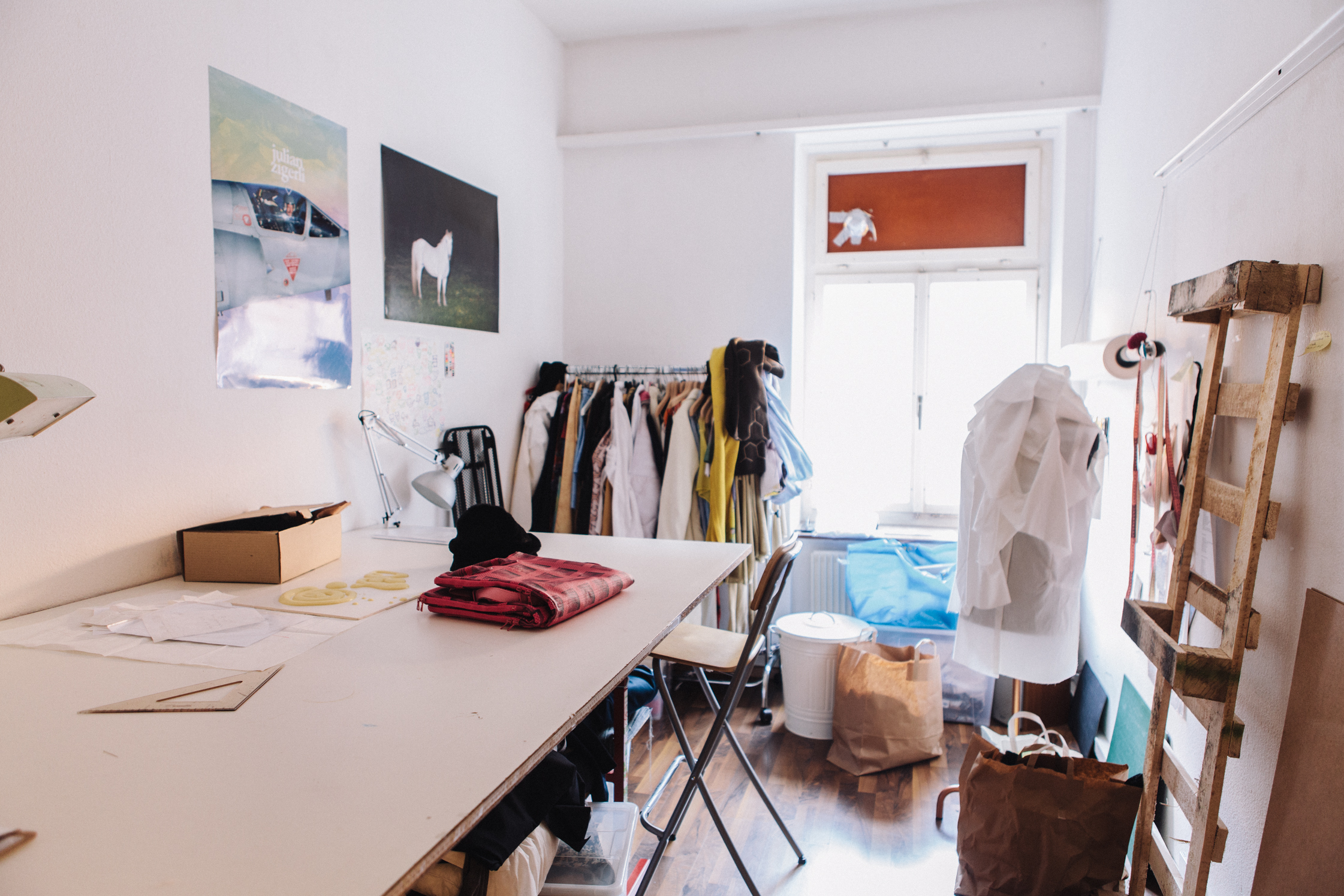
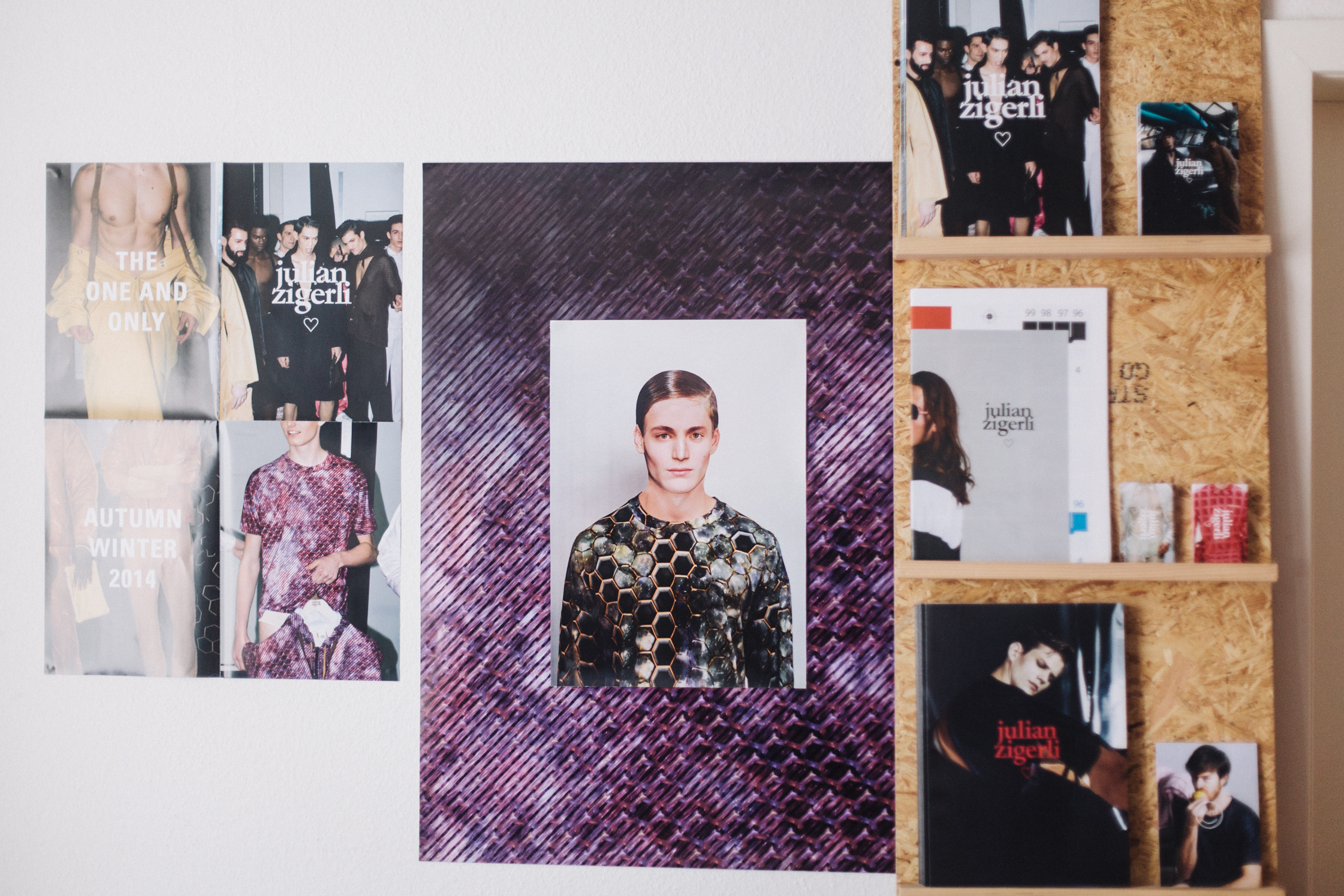
-
What is the video for your summer collection 2015, Life is One of the Hardest, about?
It’s about an overworked office worker shortly before he snaps. He worked for 72 hours straight and is totally exhausted. Then this “salary man” falls into a world that is totally free.
-
Are you the man represented by the collection?
No. It was simply a story that I liked.
-
Your reality isn’t so far from this plot. The fashion business is brutal, the investment is high, the pressure enormous.
That’s true. Following fashion week I always have the blues. After Milan and Berlin I go to Paris, where I have a showroom. This means you sit around the whole day with your clothes and the people come and look at your things, maybe give feedback or not. That’s always the hardest time for me because I’m really exhausted afterwards. For the first three years I simply made, made, made, then looked at what came out of it. But for the last year it’s been eating away at me. When we sit together and look at the numbers for the company, you ask yourself, “Why the fuck are we doing this?” It’s not always easy.
-
How do you deal with it?
My nicknames weren’t Susi Serene and Carrie Careless without reason. This attitude is deeply rooted in me, without it I would have gone under a long time ago. You work hard as a designer and it proceeds slowly. I have a great environment that believes in me – as with many fashion designers in Switzerland. They’re thrilled that I give it everything. That gives me an extreme push.
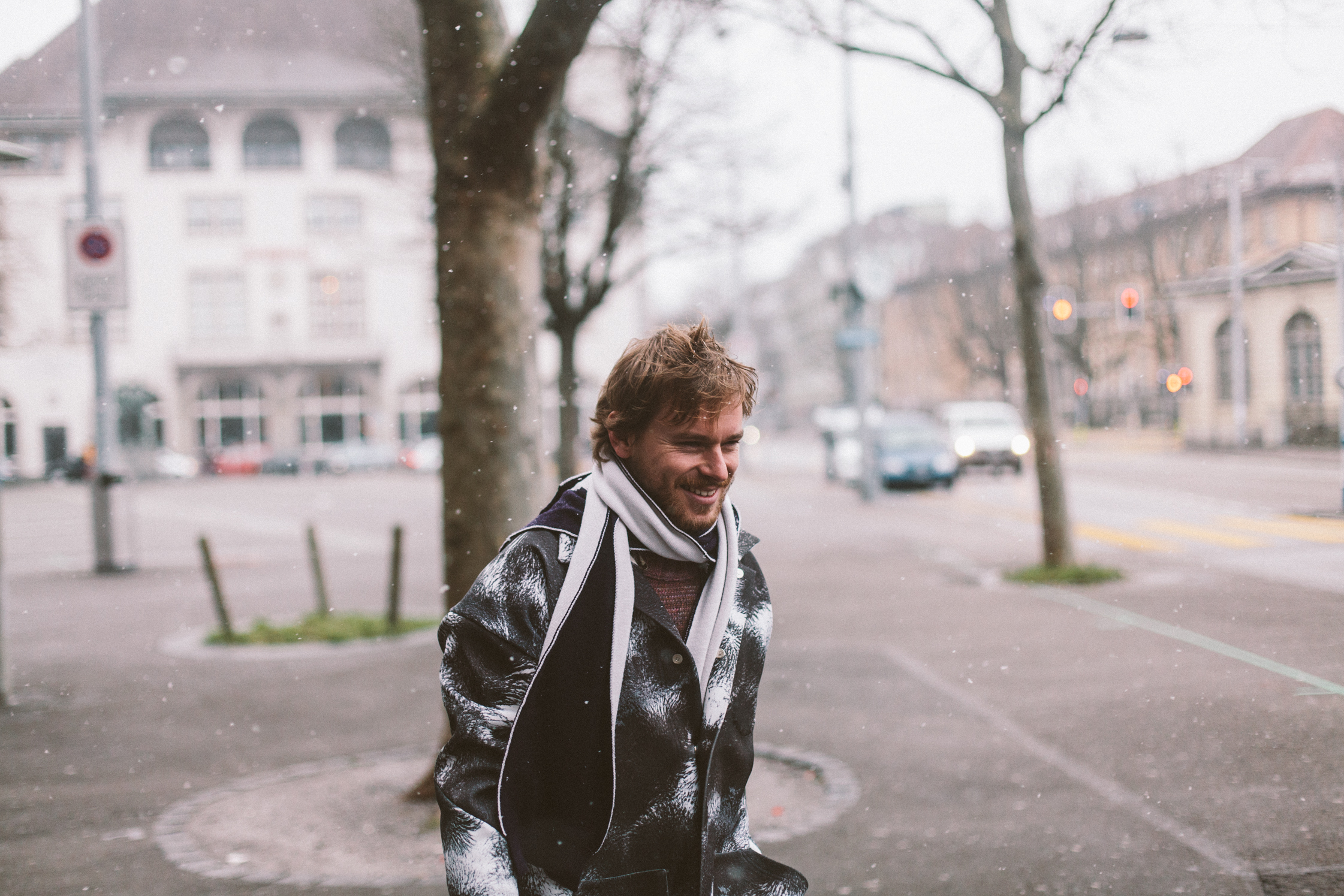
Our talk with Julian Zigerli ended in his favorite place – the Sports Bar in Zurich’s multicultural 4th district, with a beloved-by-the-Swiss Schinkengipfeli (ham croissant) and a cup of coffee. Our walk leads us over the Hardbrücke, where the Prime Tower rises into the sky and the train station’s tracks create a mosaic. The days slowly darkens. In the café Julian taps at his cell phone. He says, “We’re going out again tonight. Are you coming with?”
Thank you Julian, for your time and this peek into your life and work! Meet more people from Zurich as they invite us into their homes and workplaces.
Photography: Robbie Lawrence
Interview: Stephanie Rebonati
